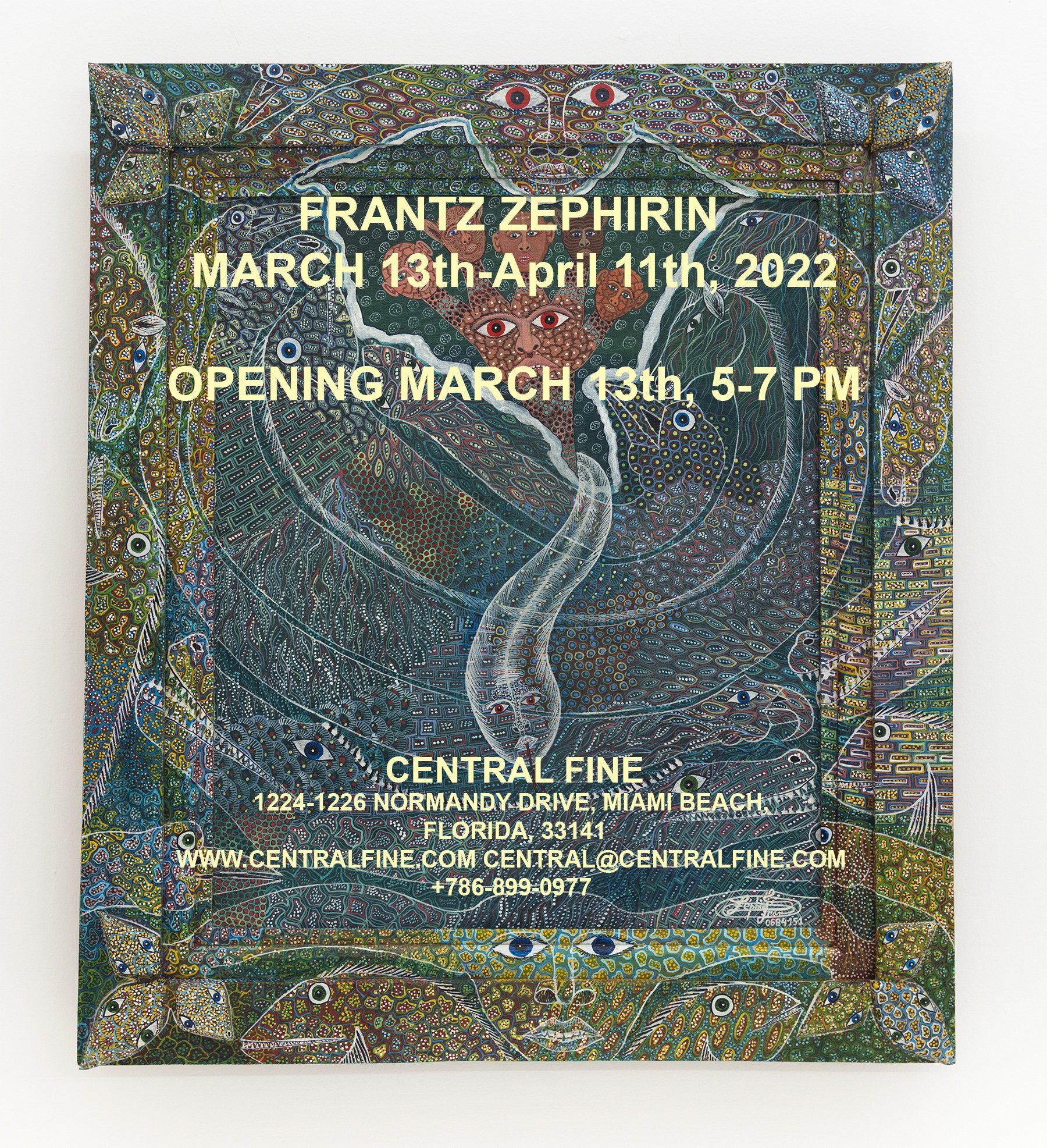
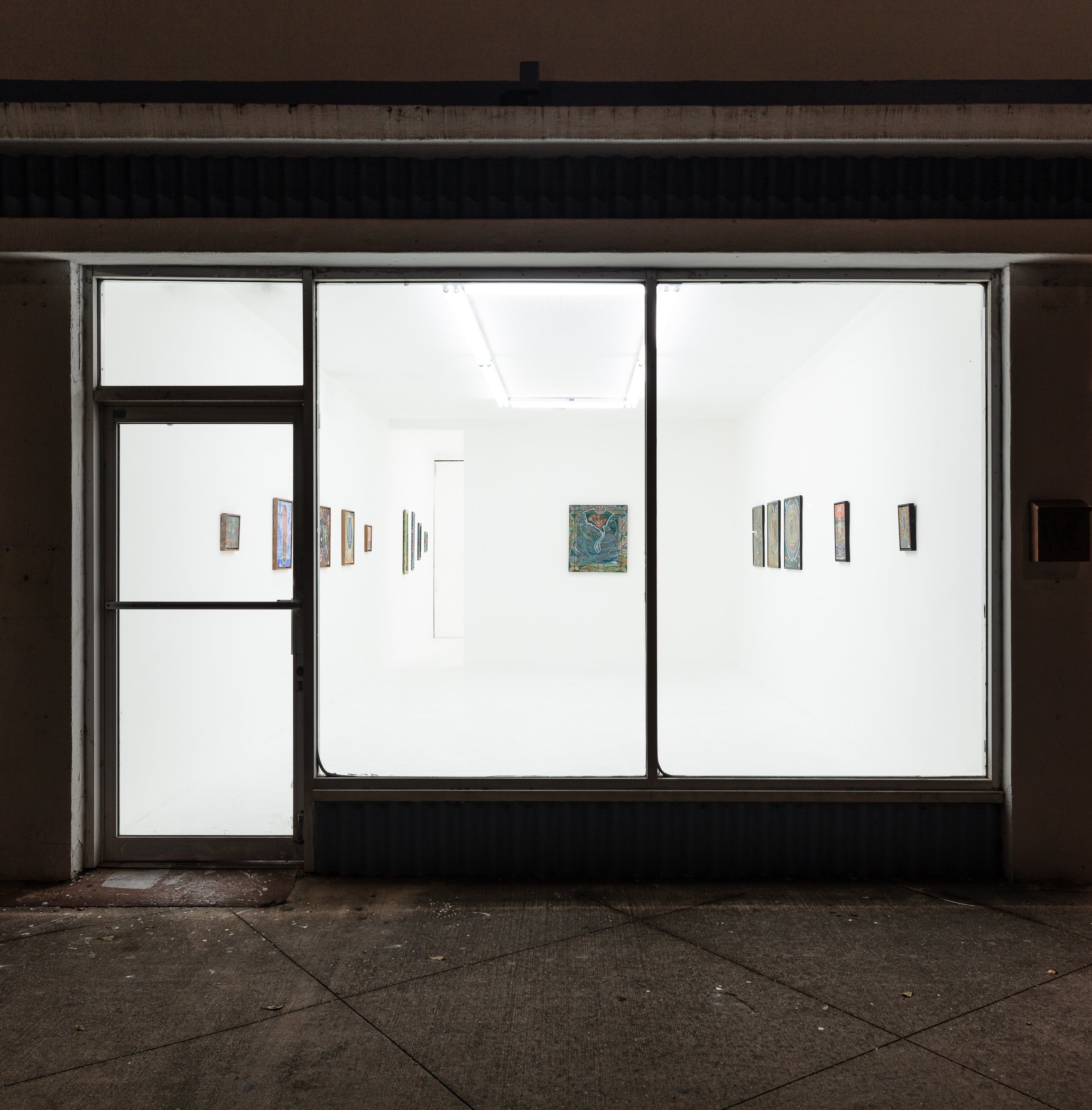
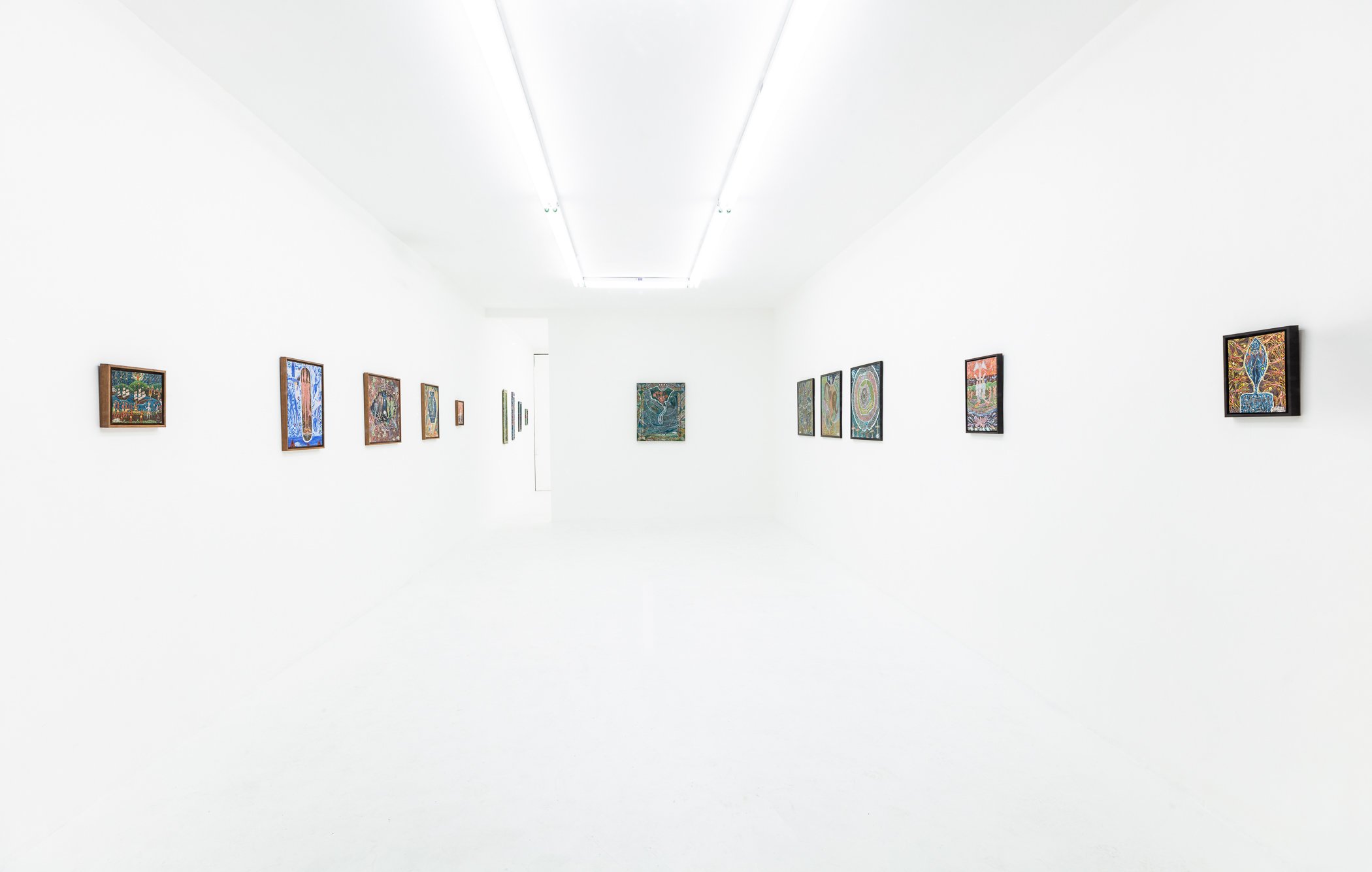
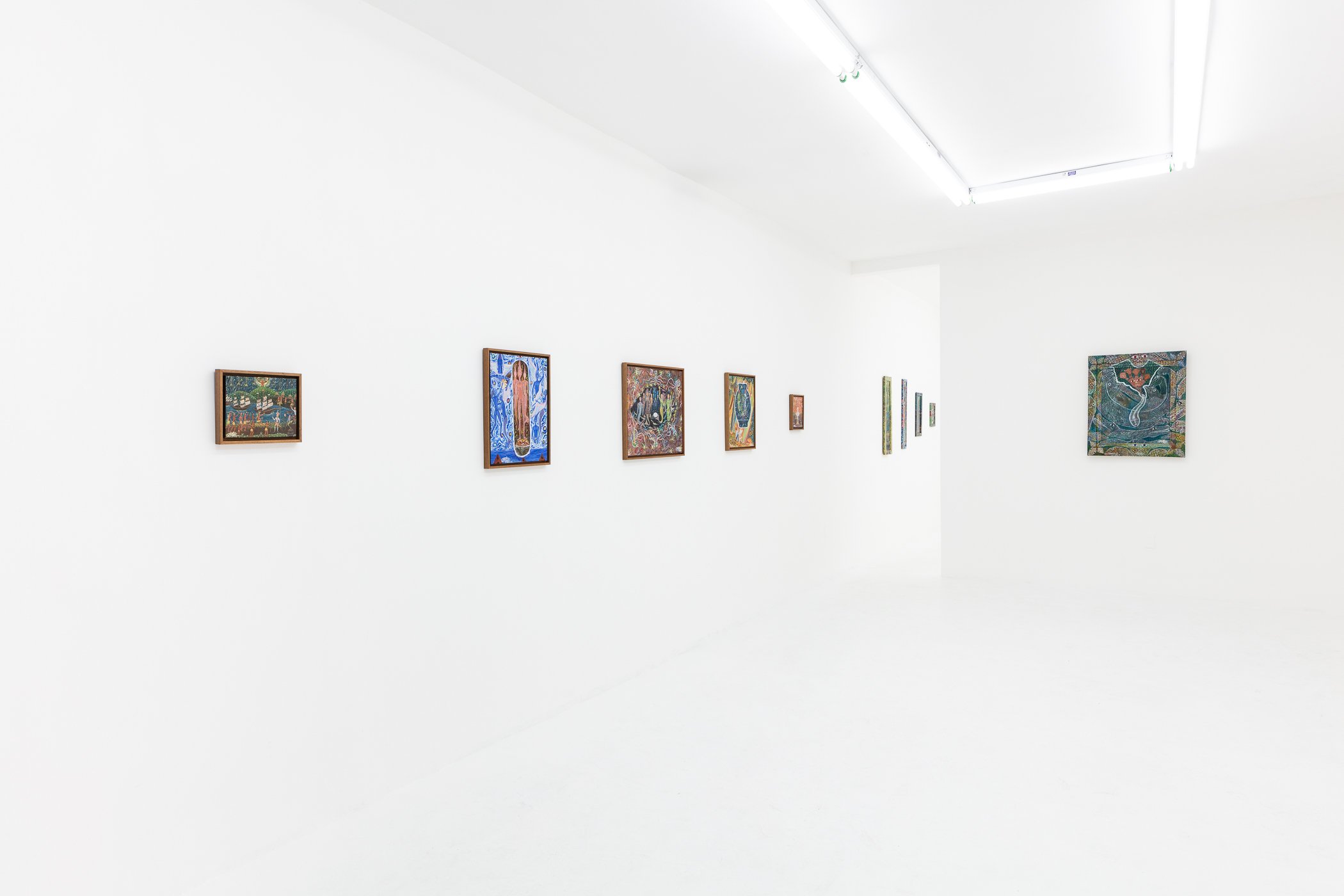
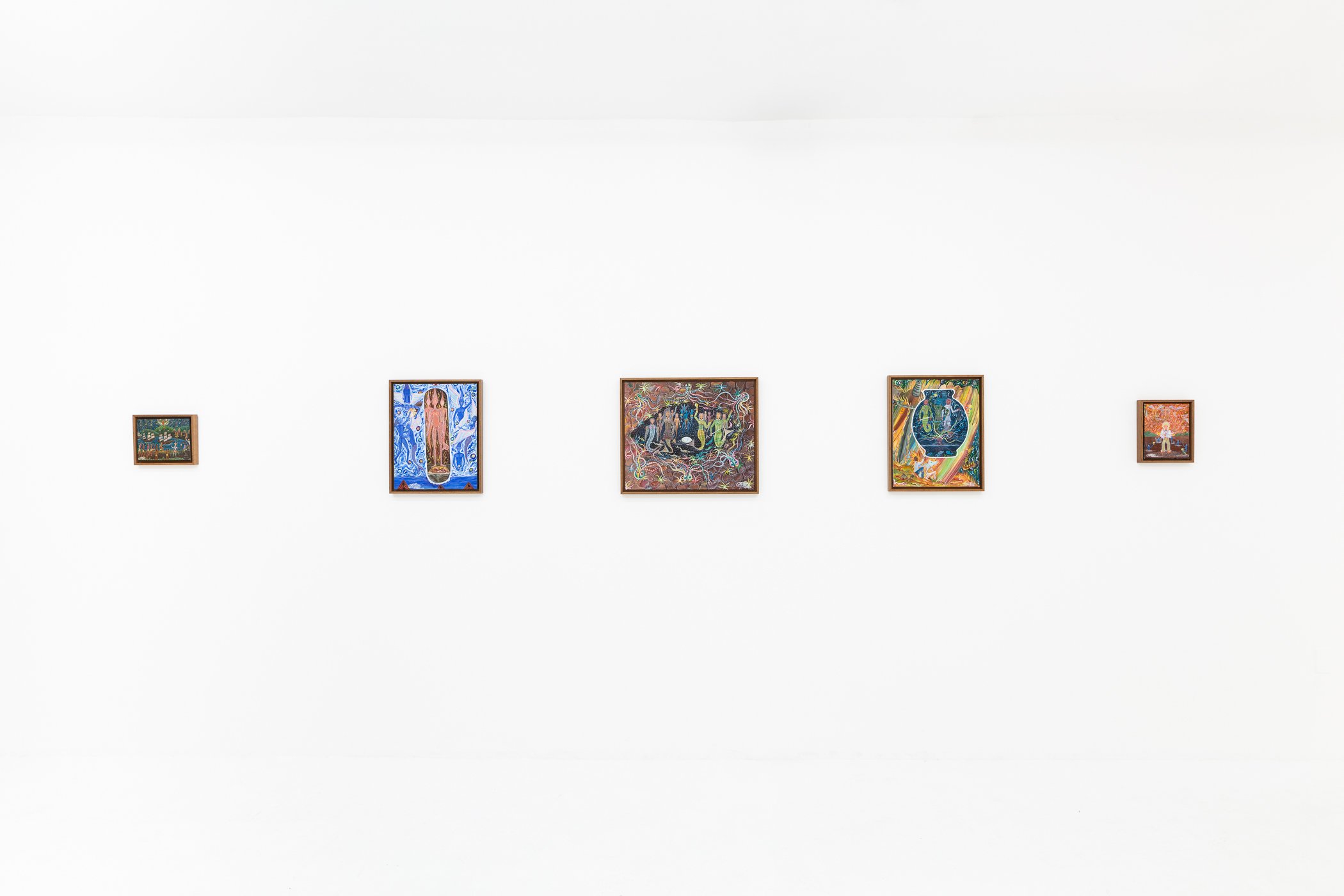
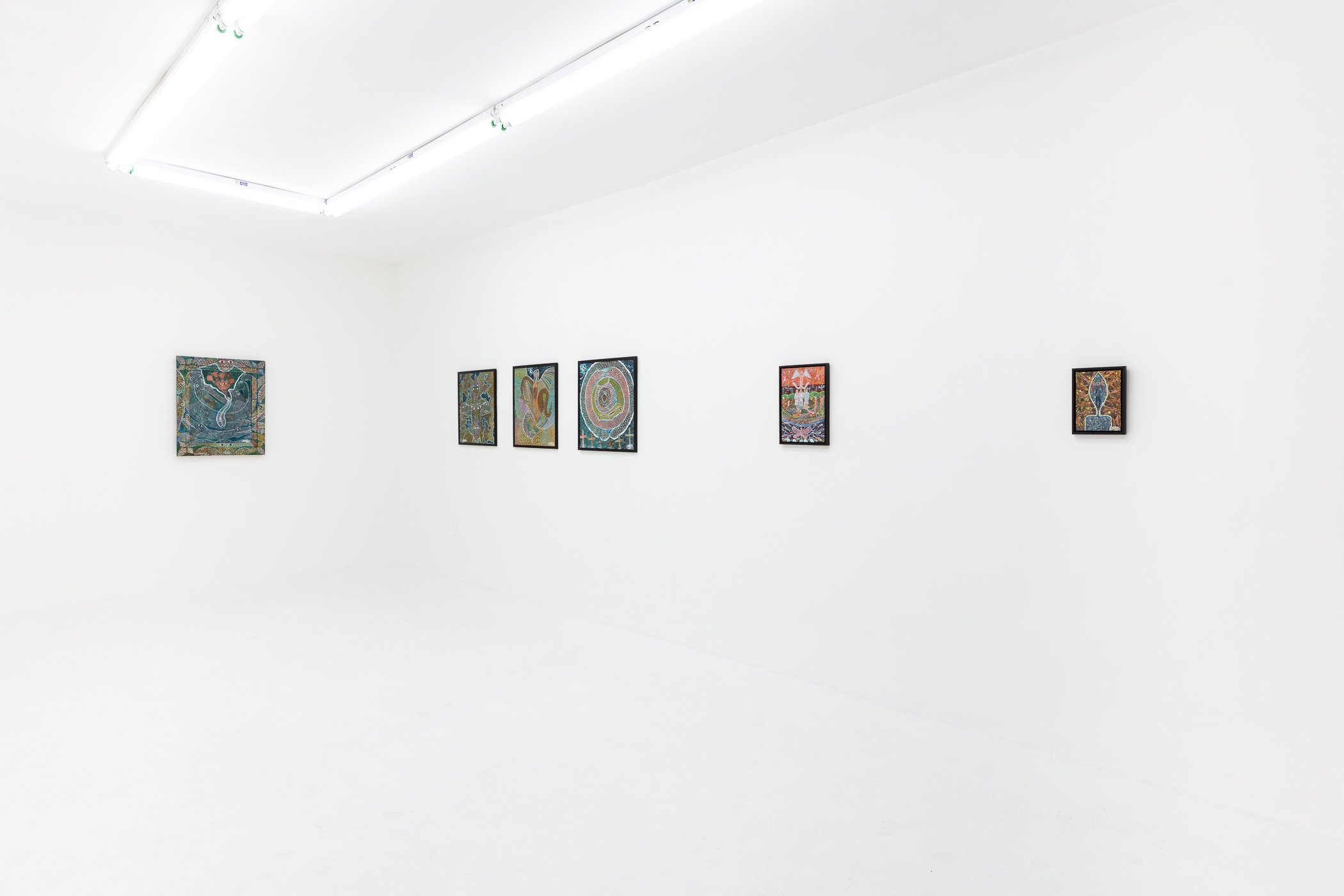
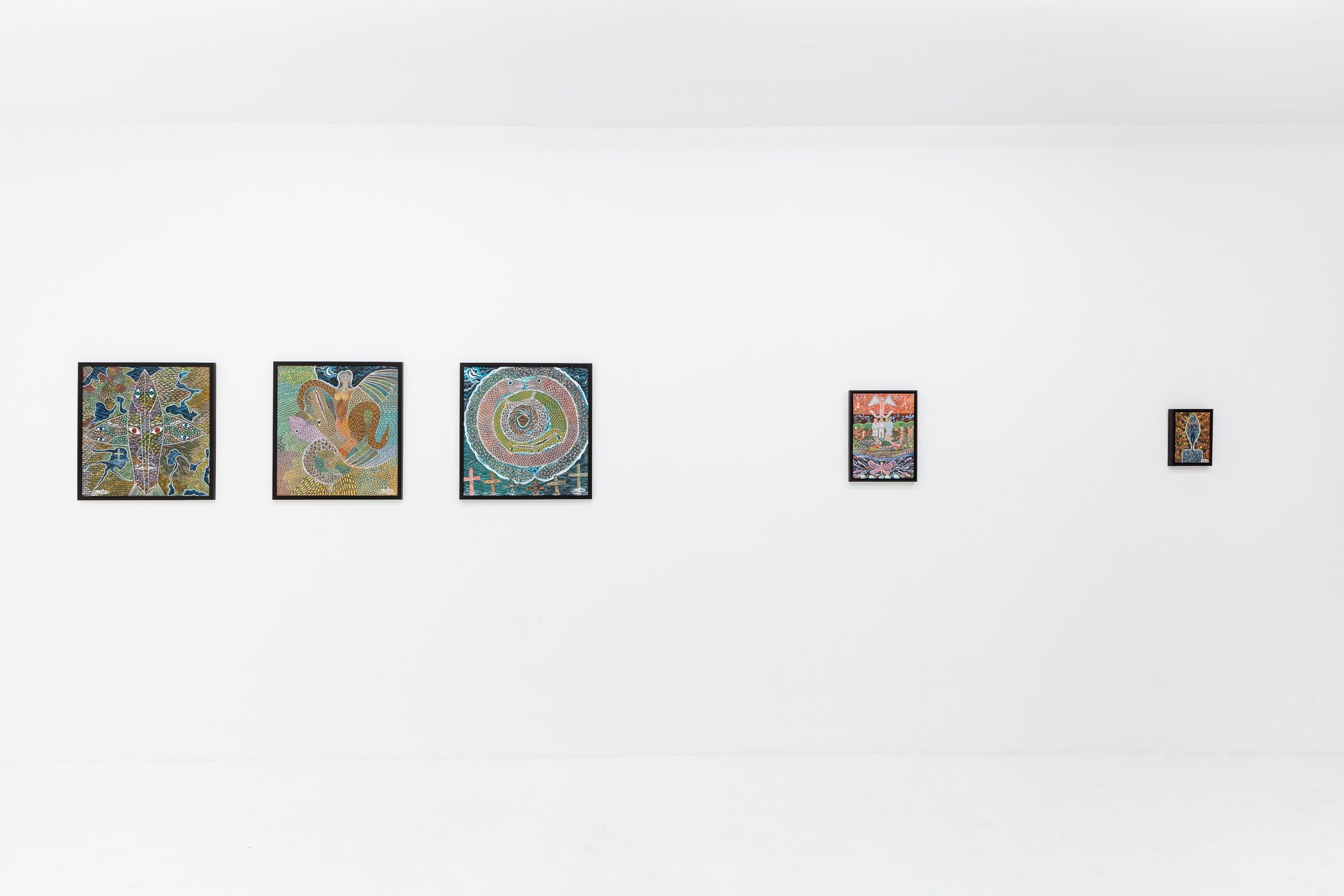
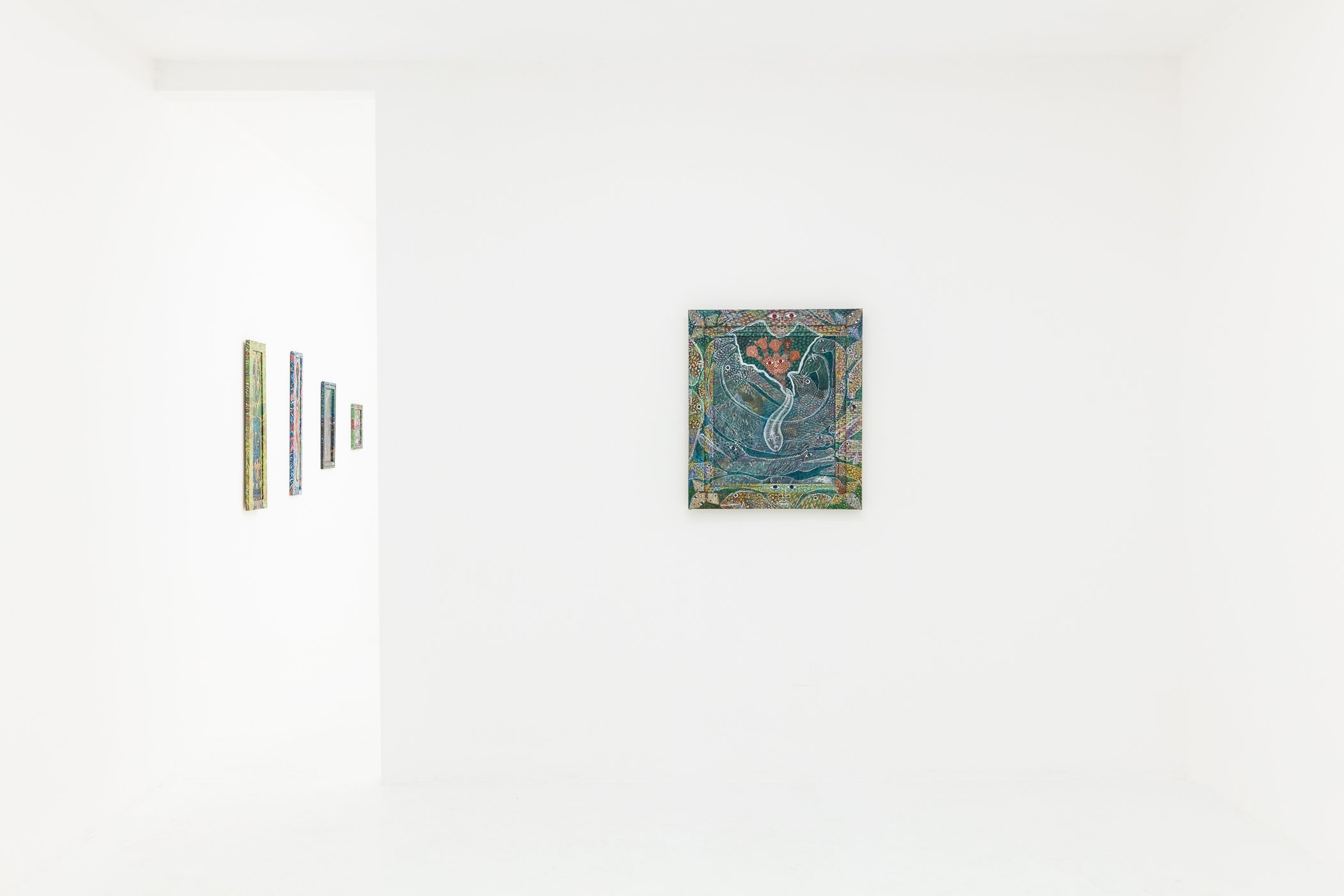
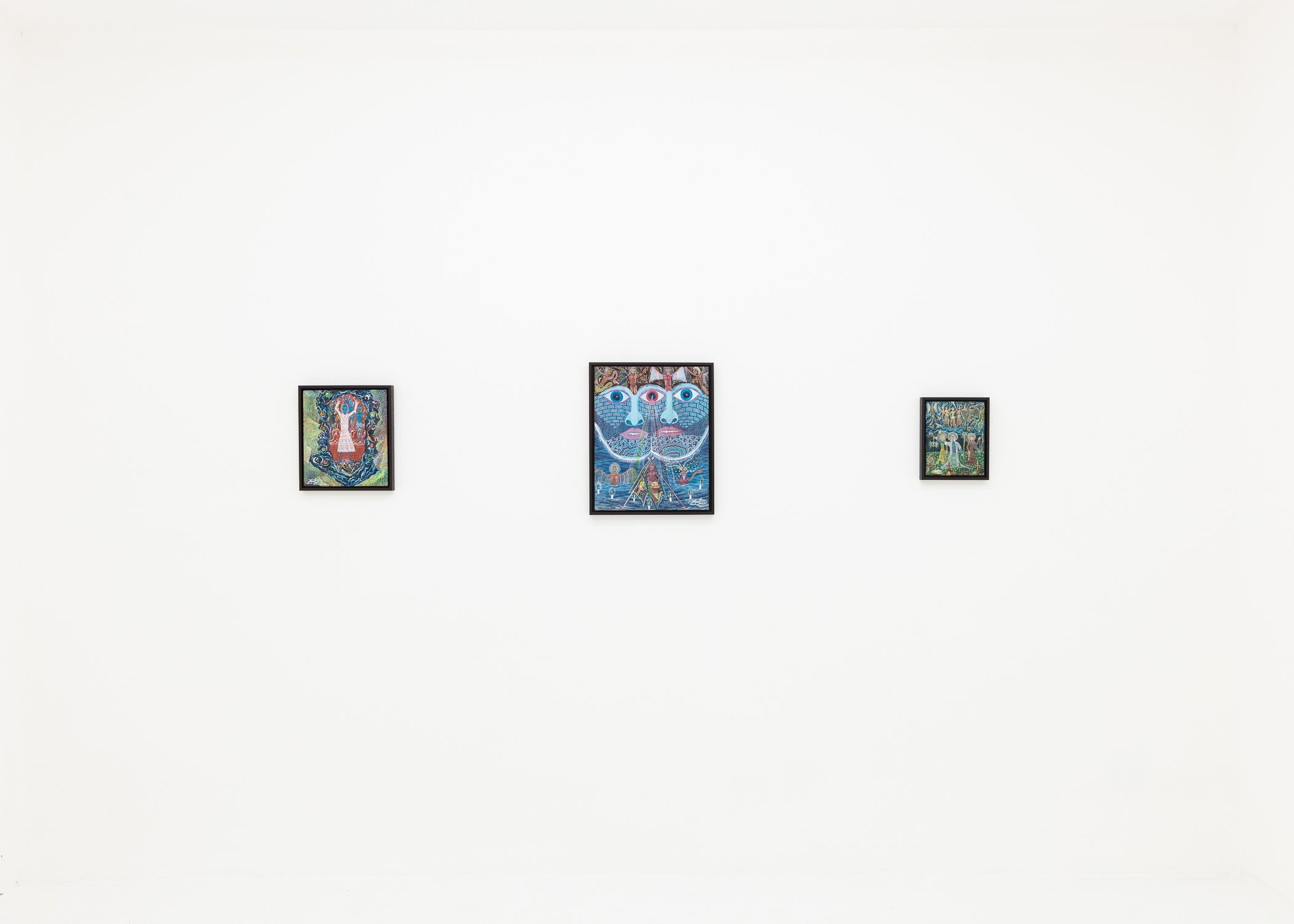

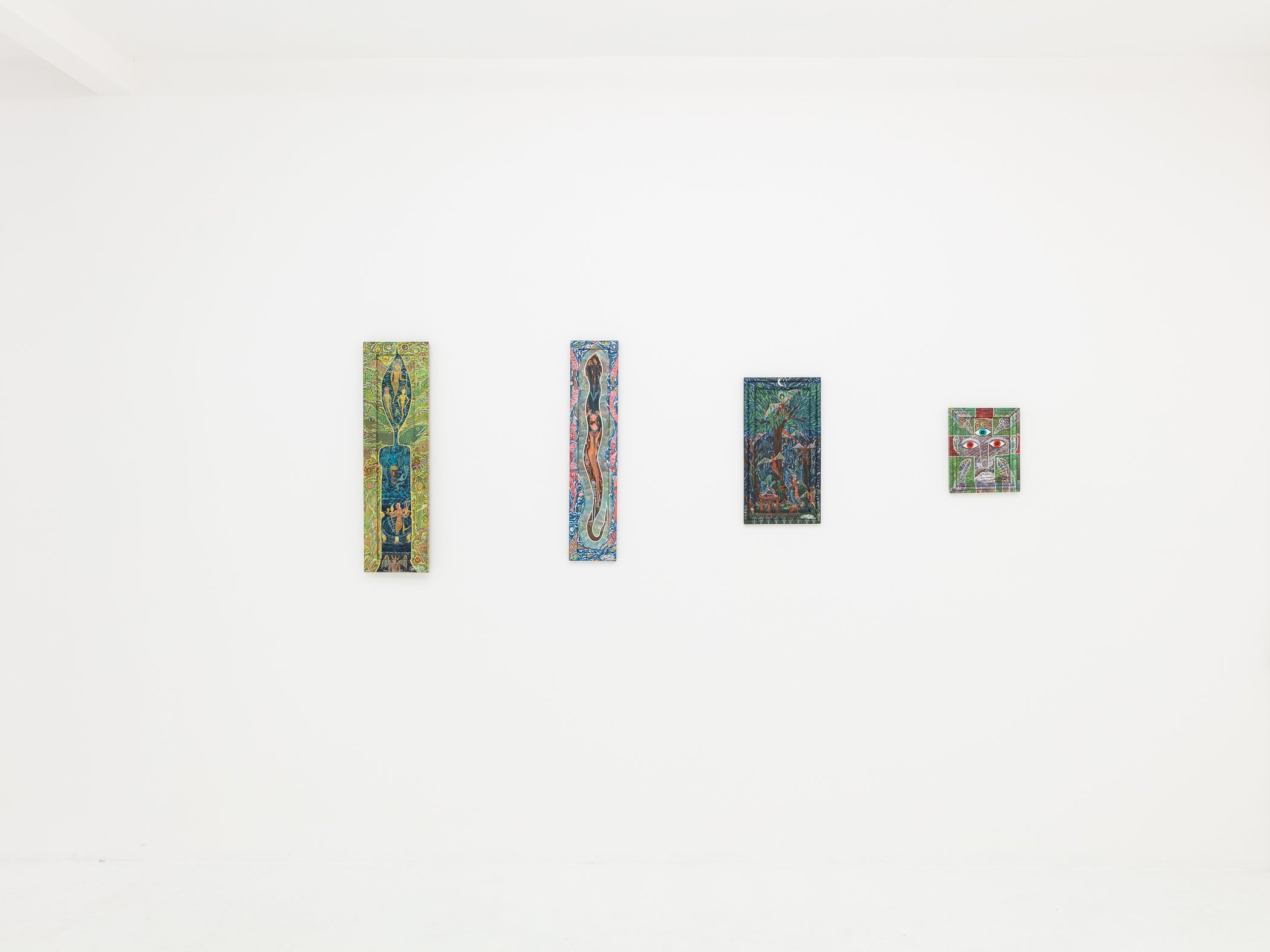
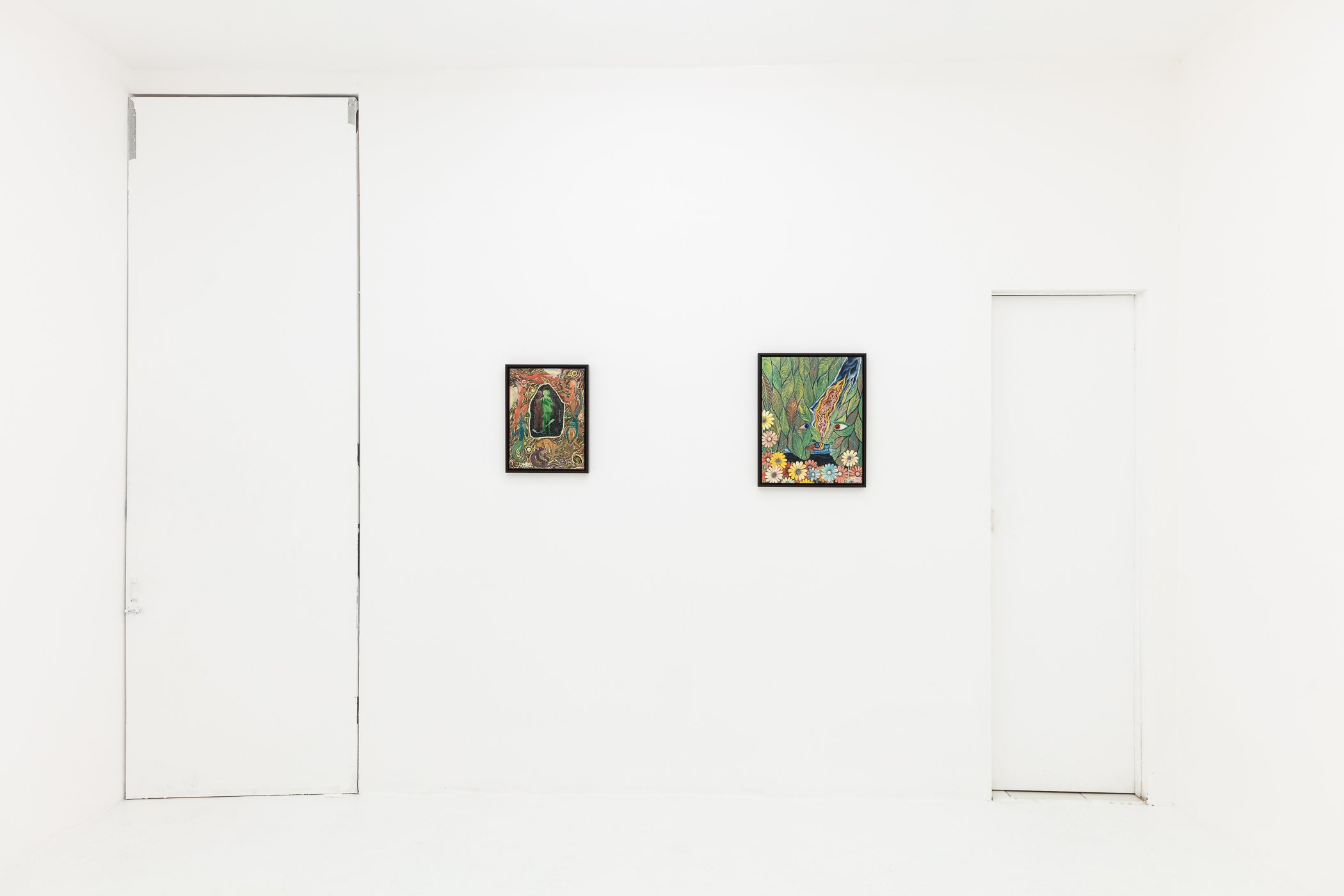
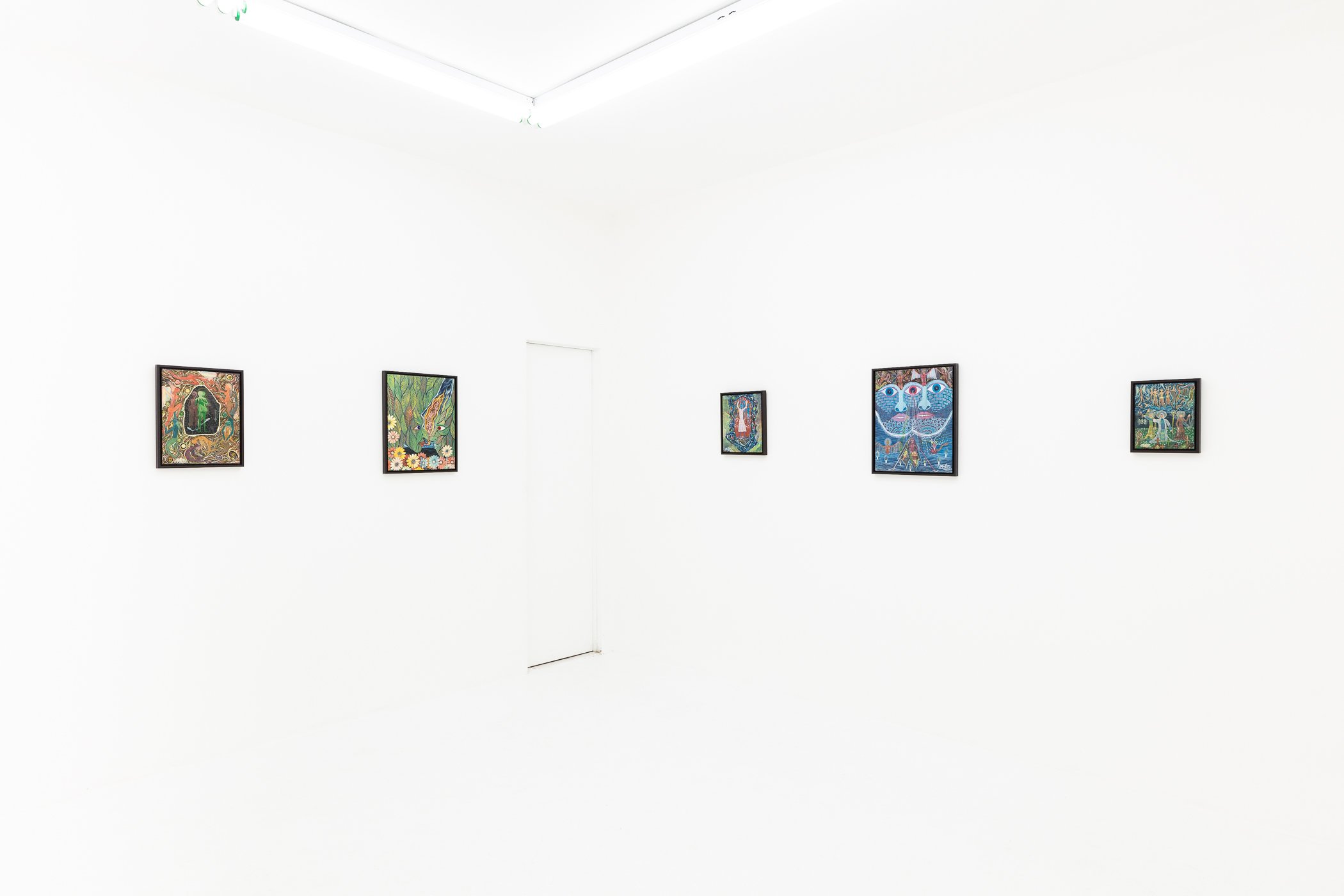

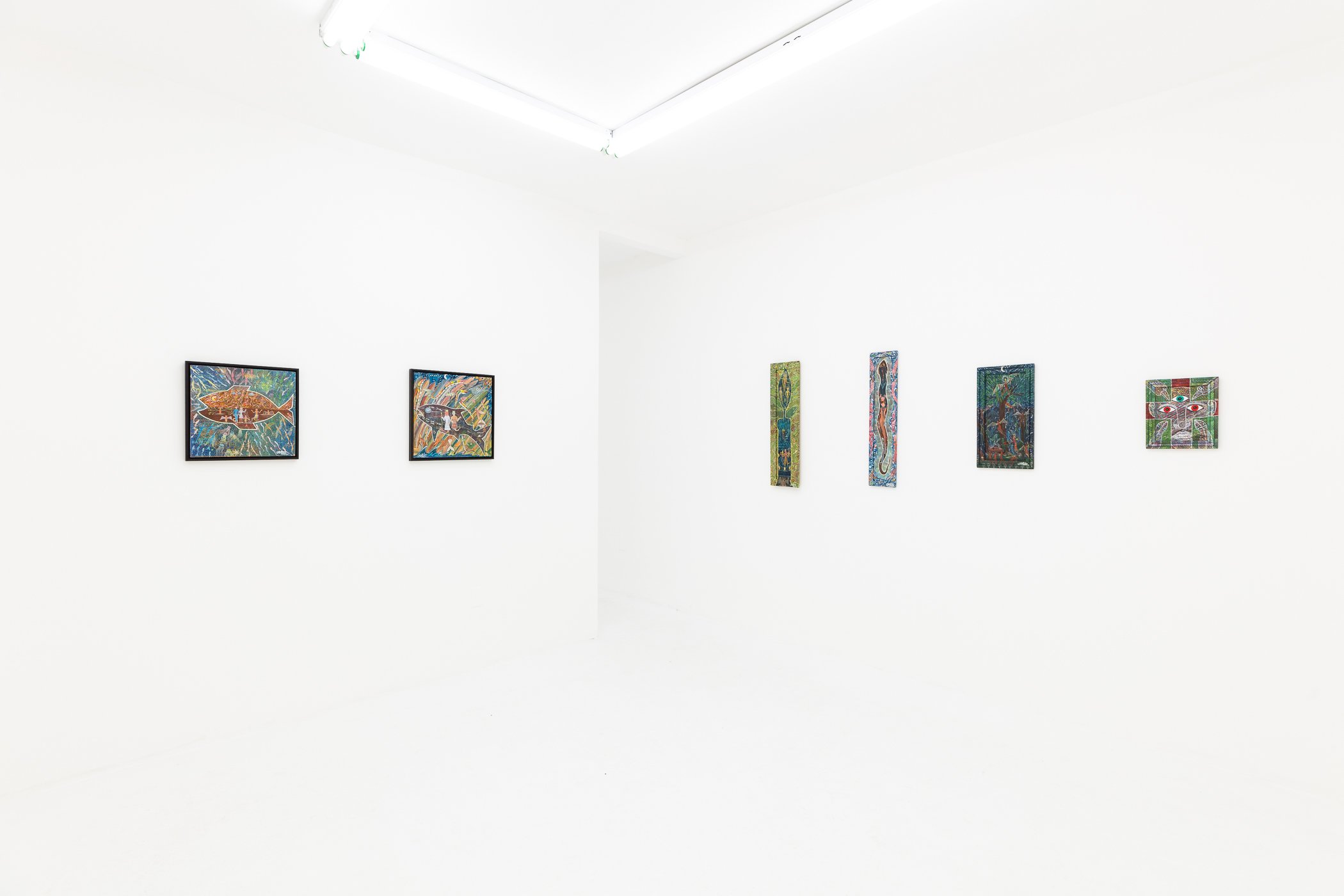
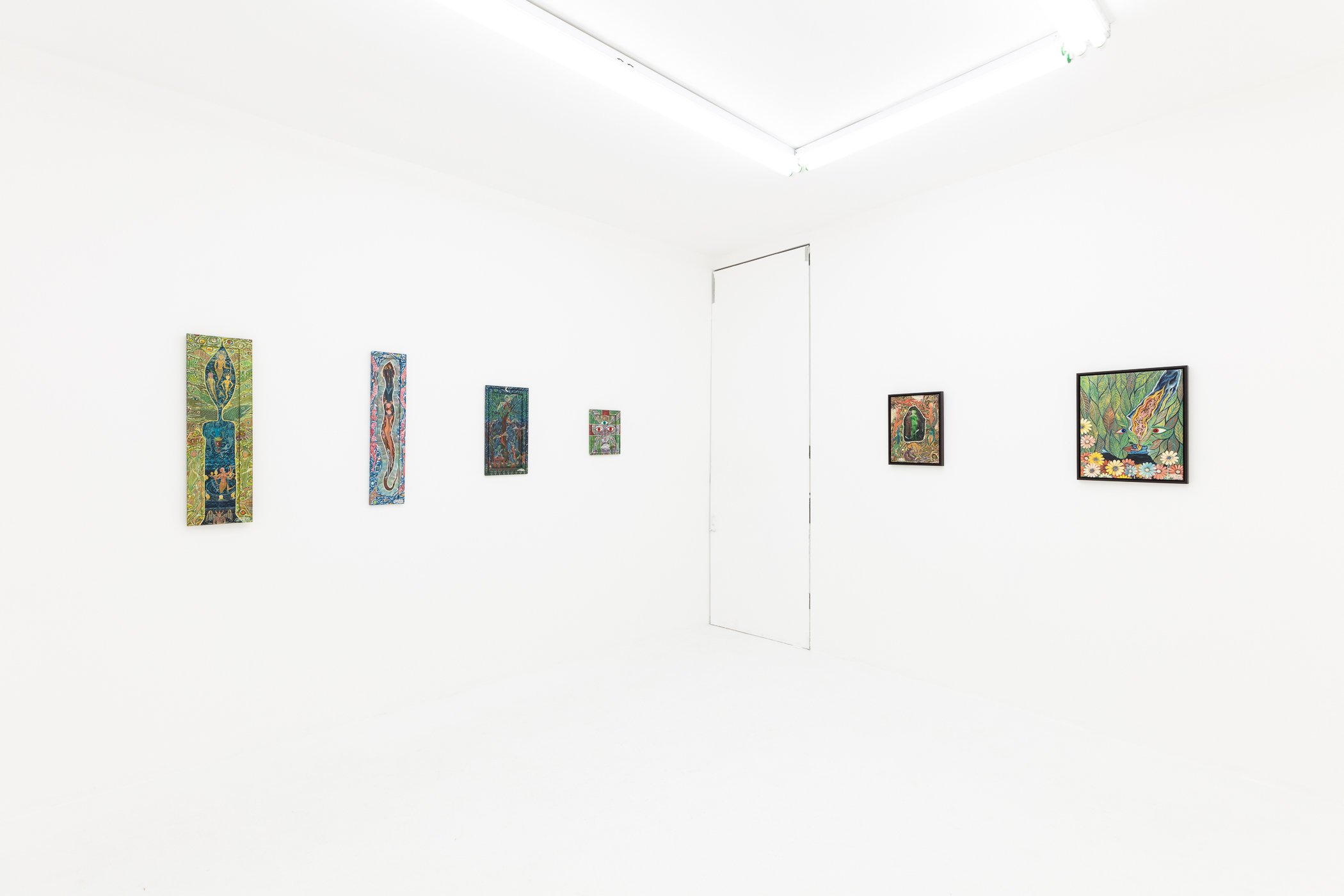
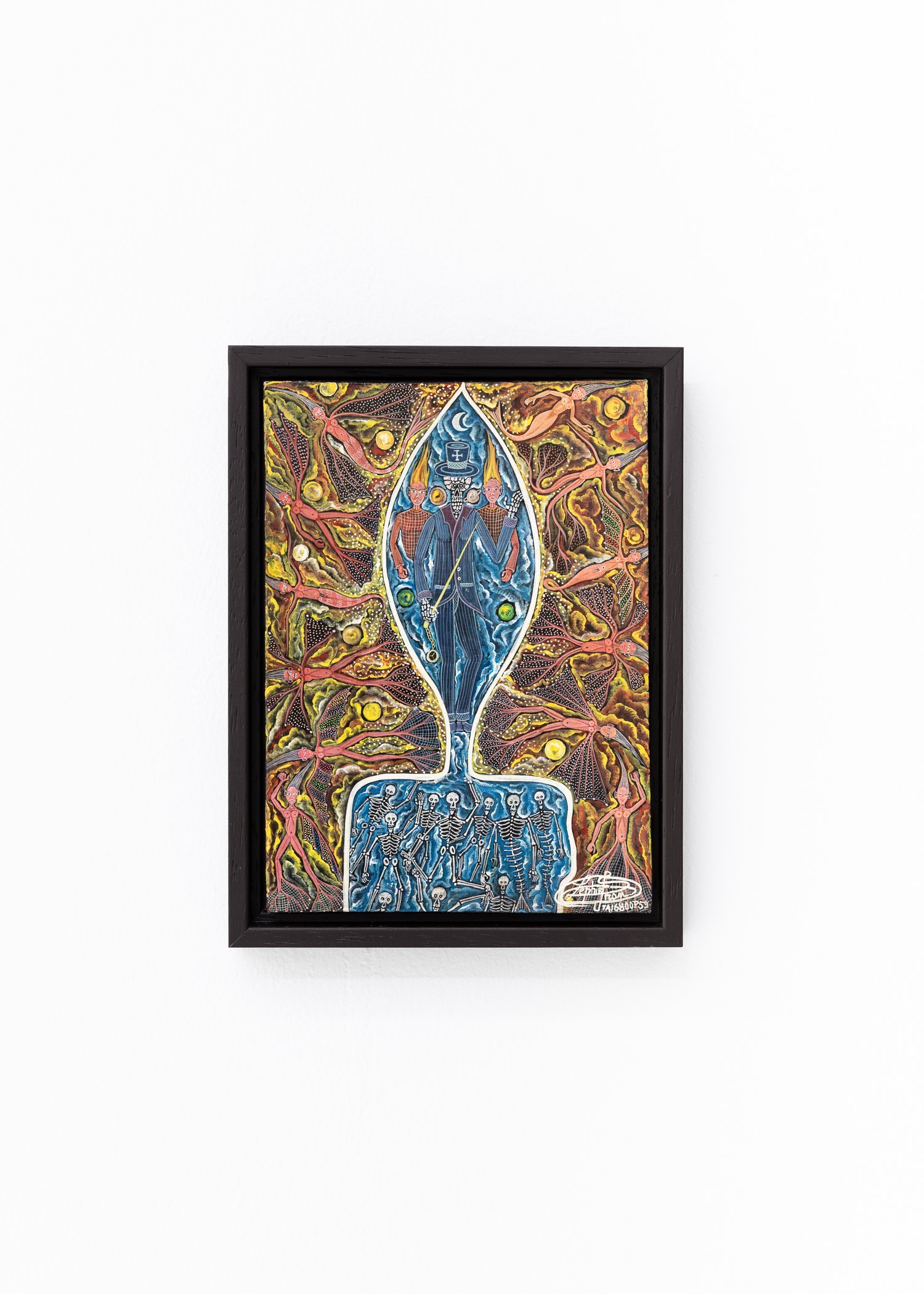
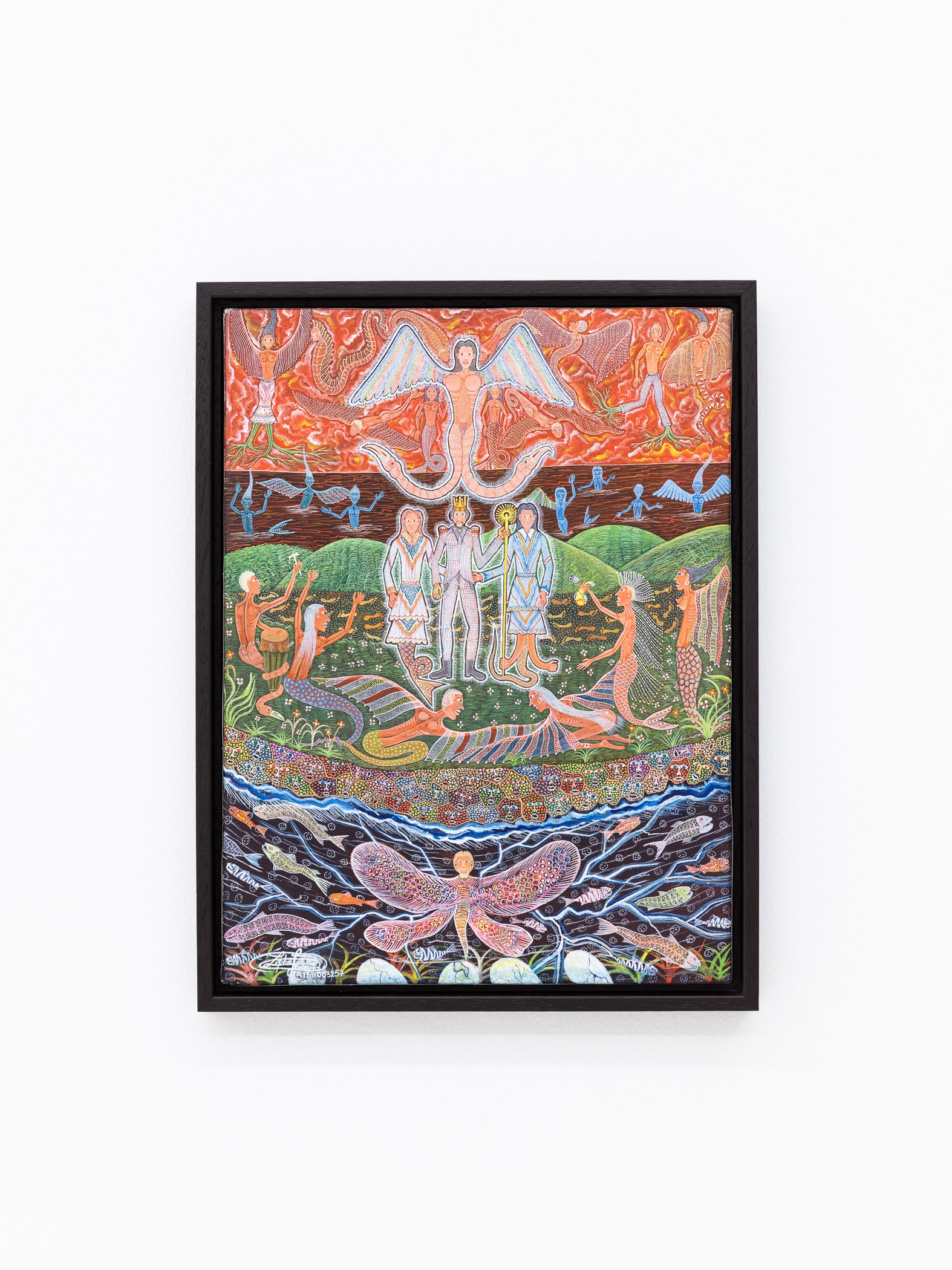

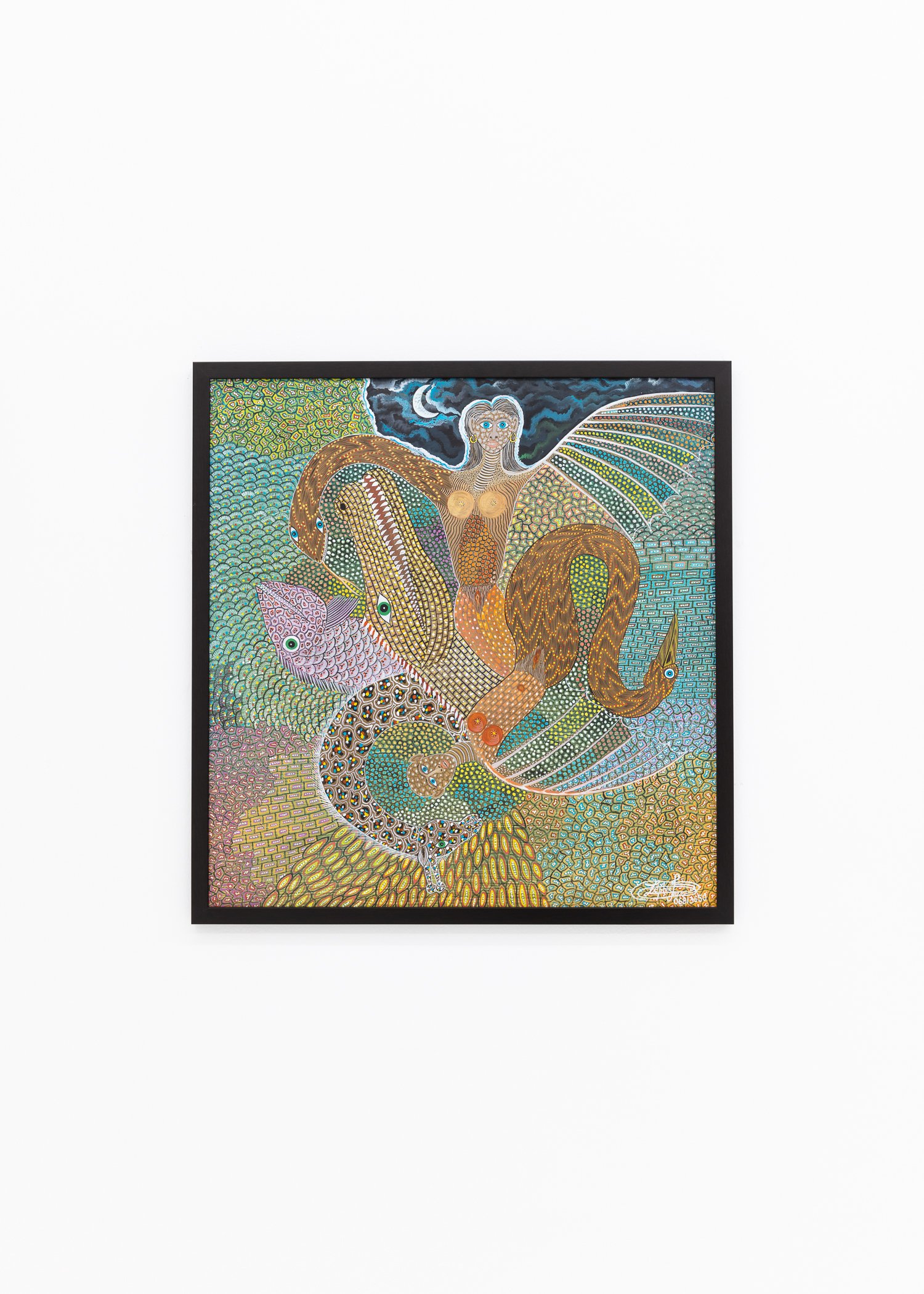
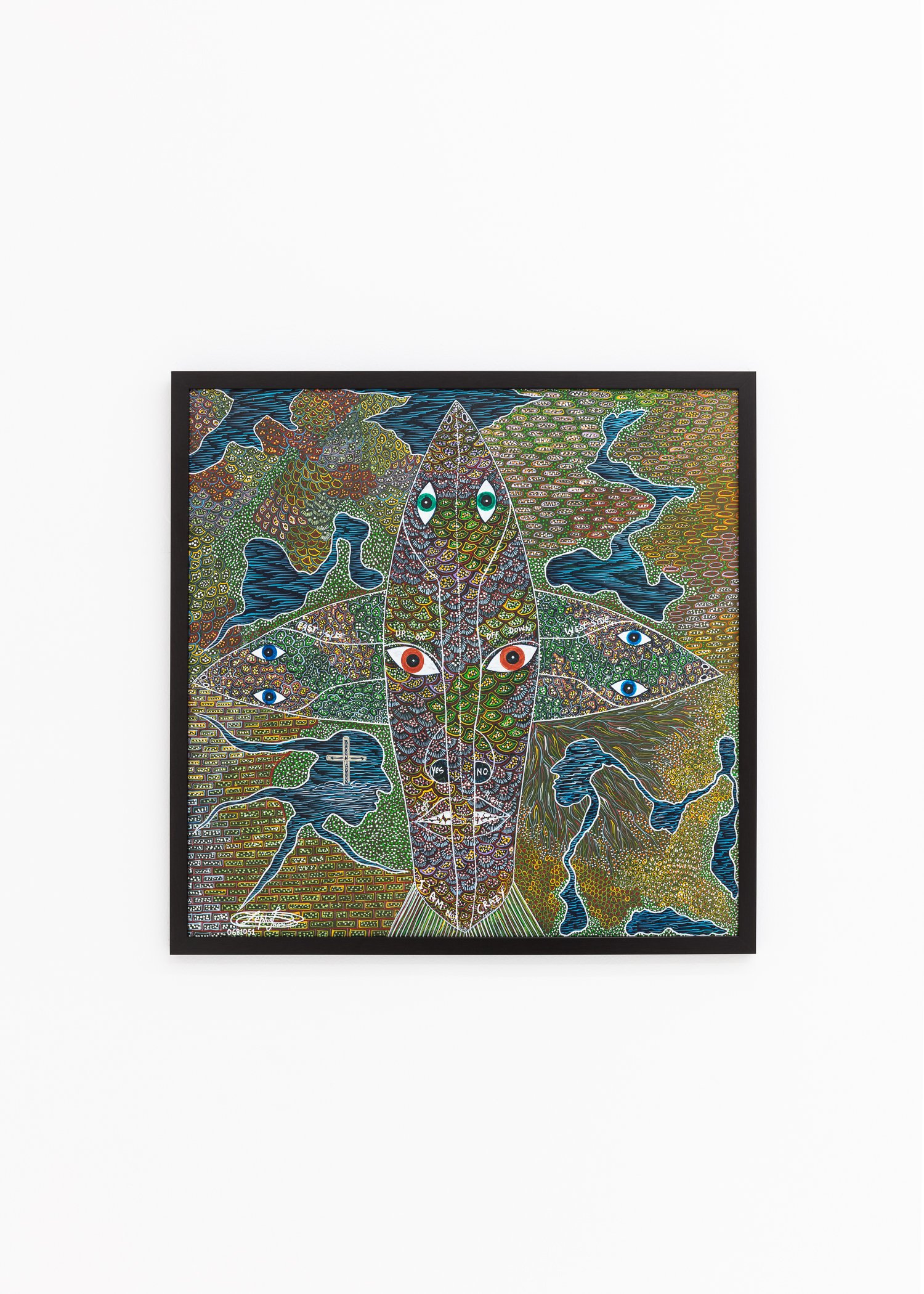
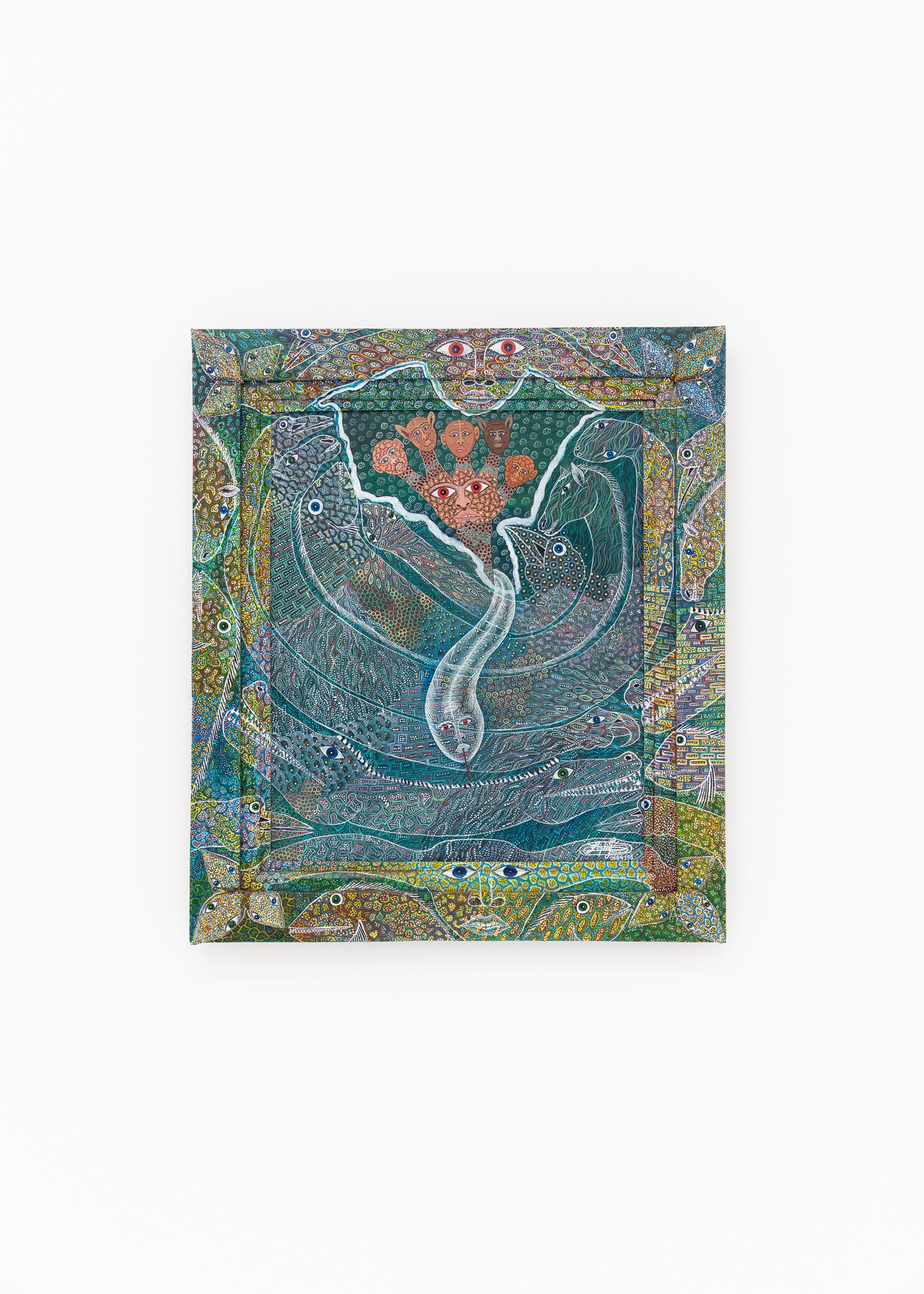
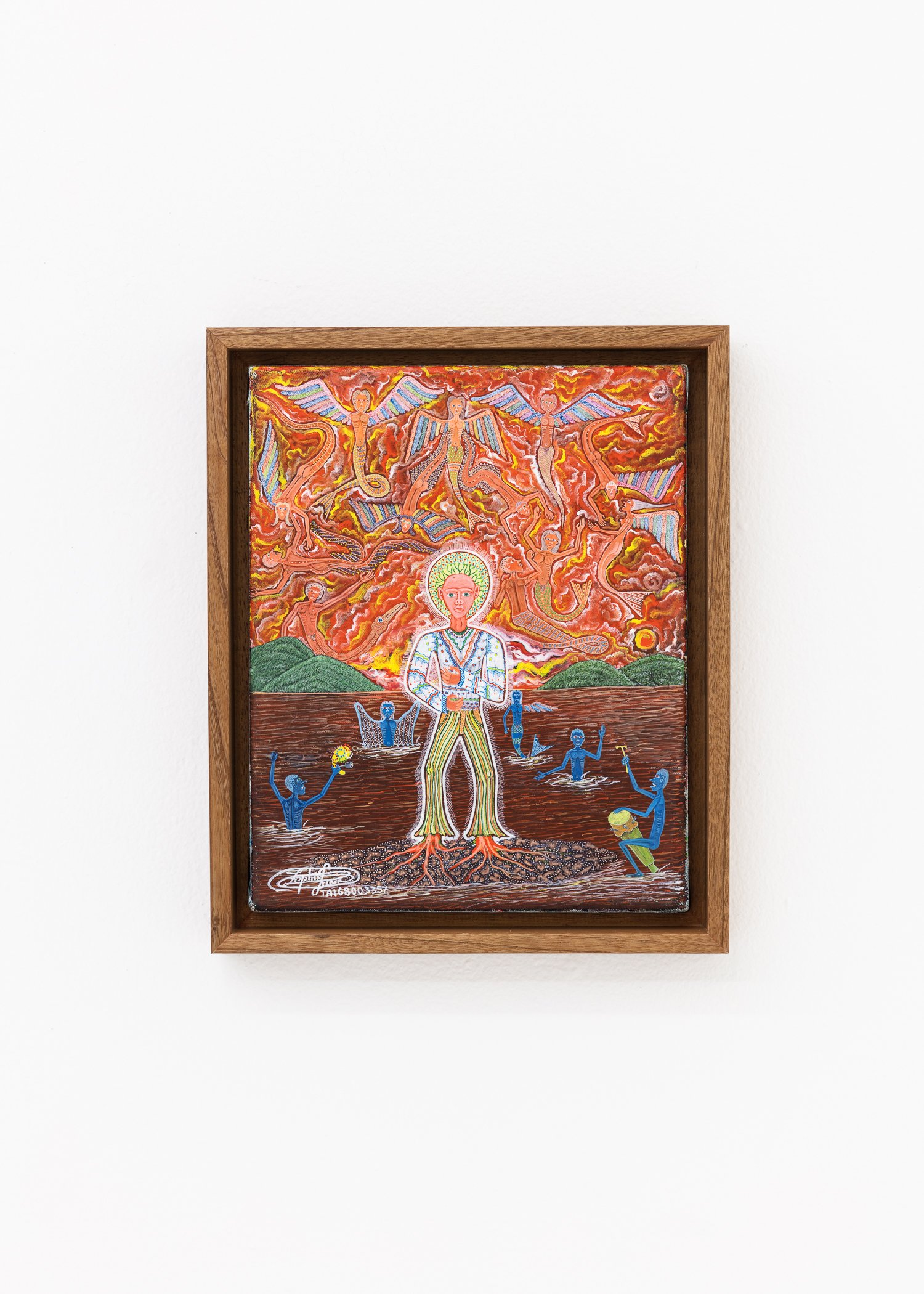
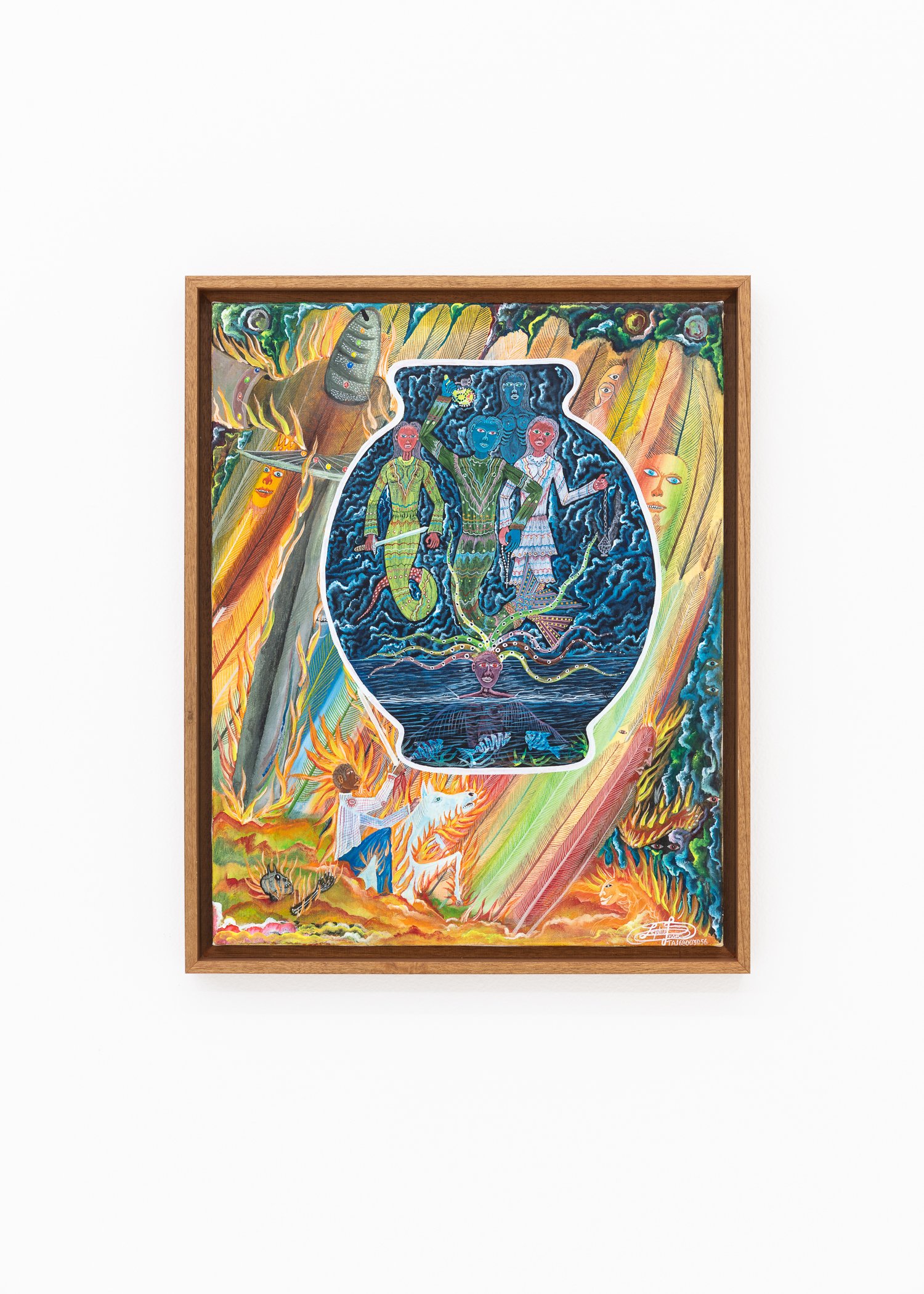
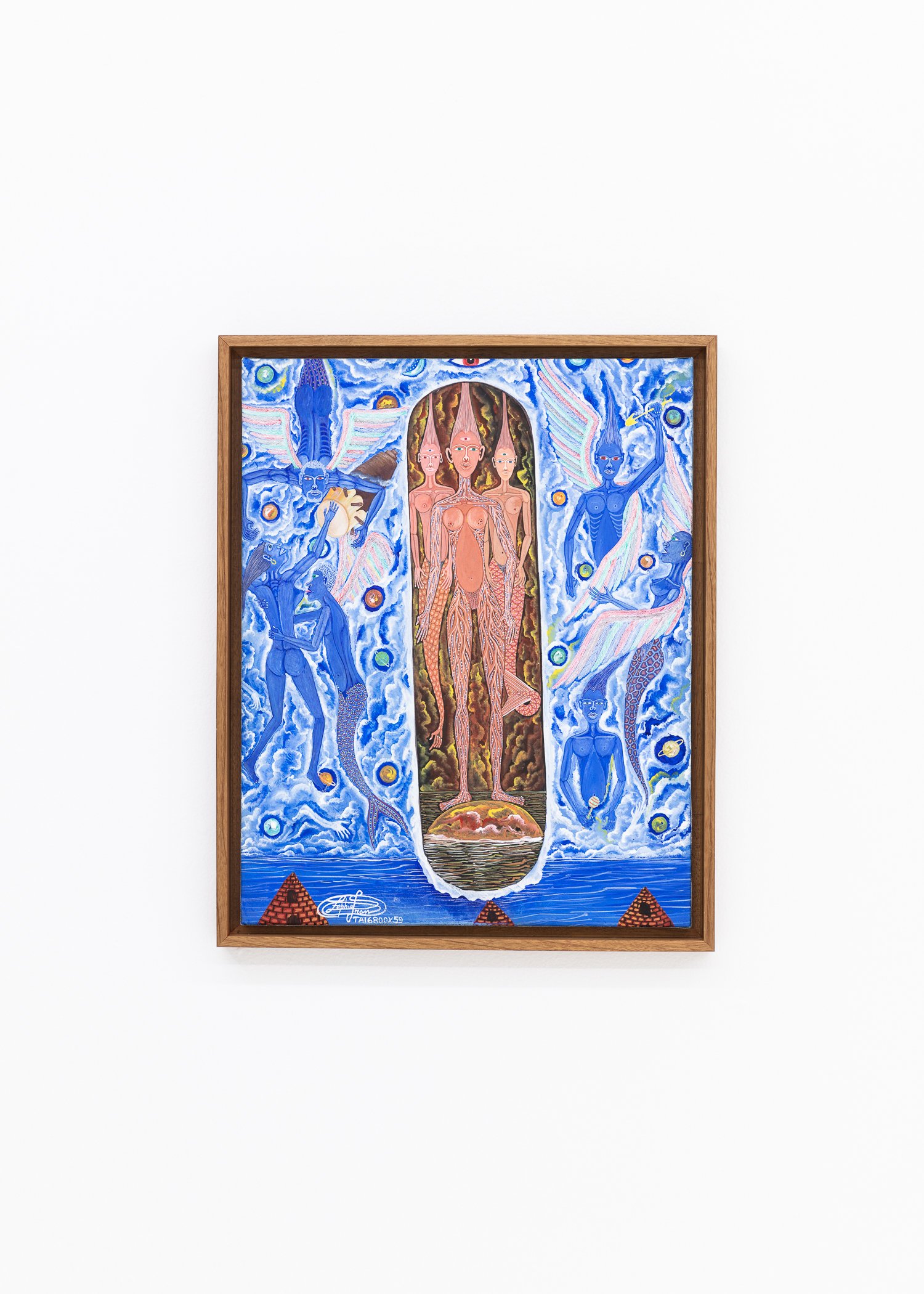
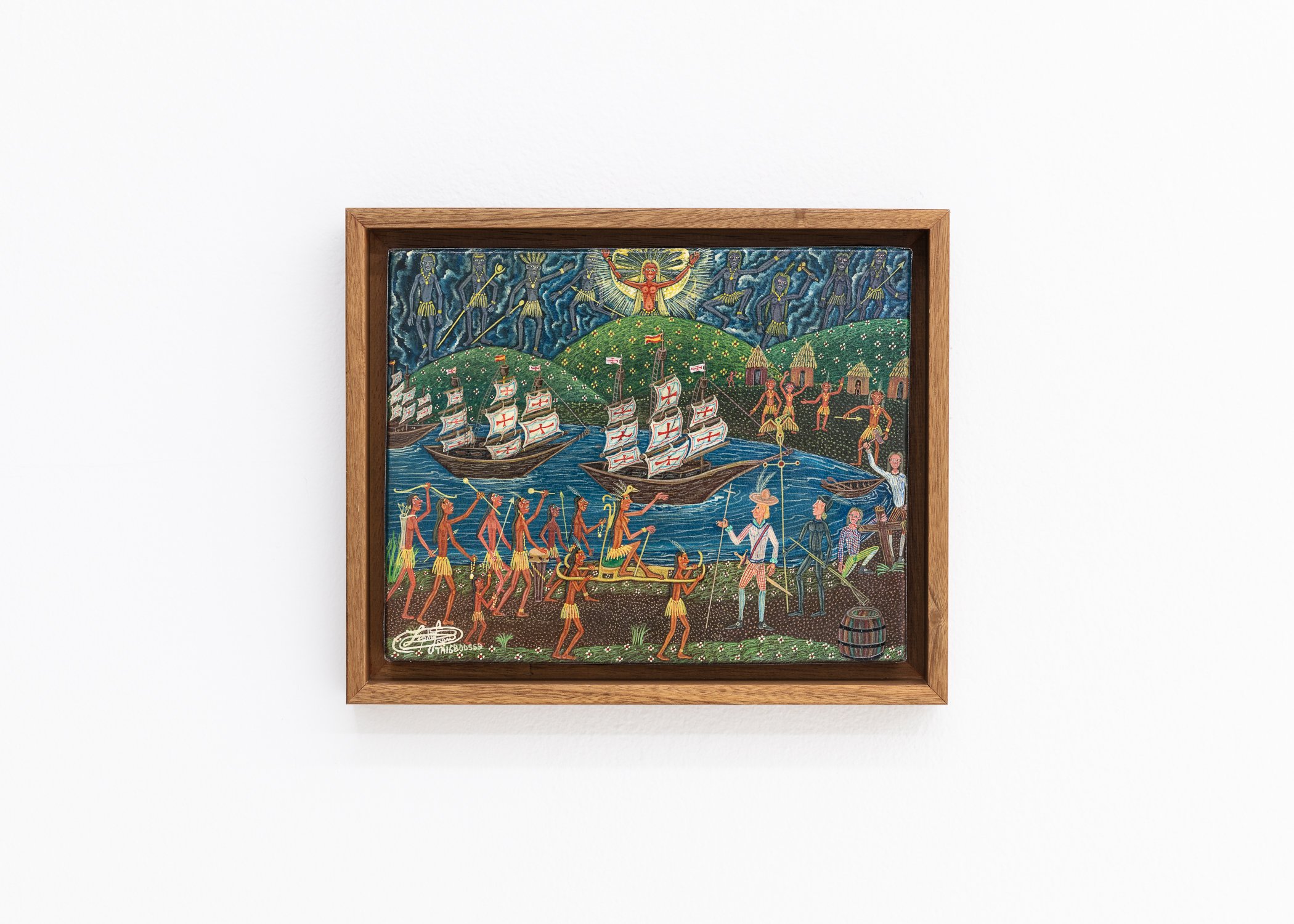
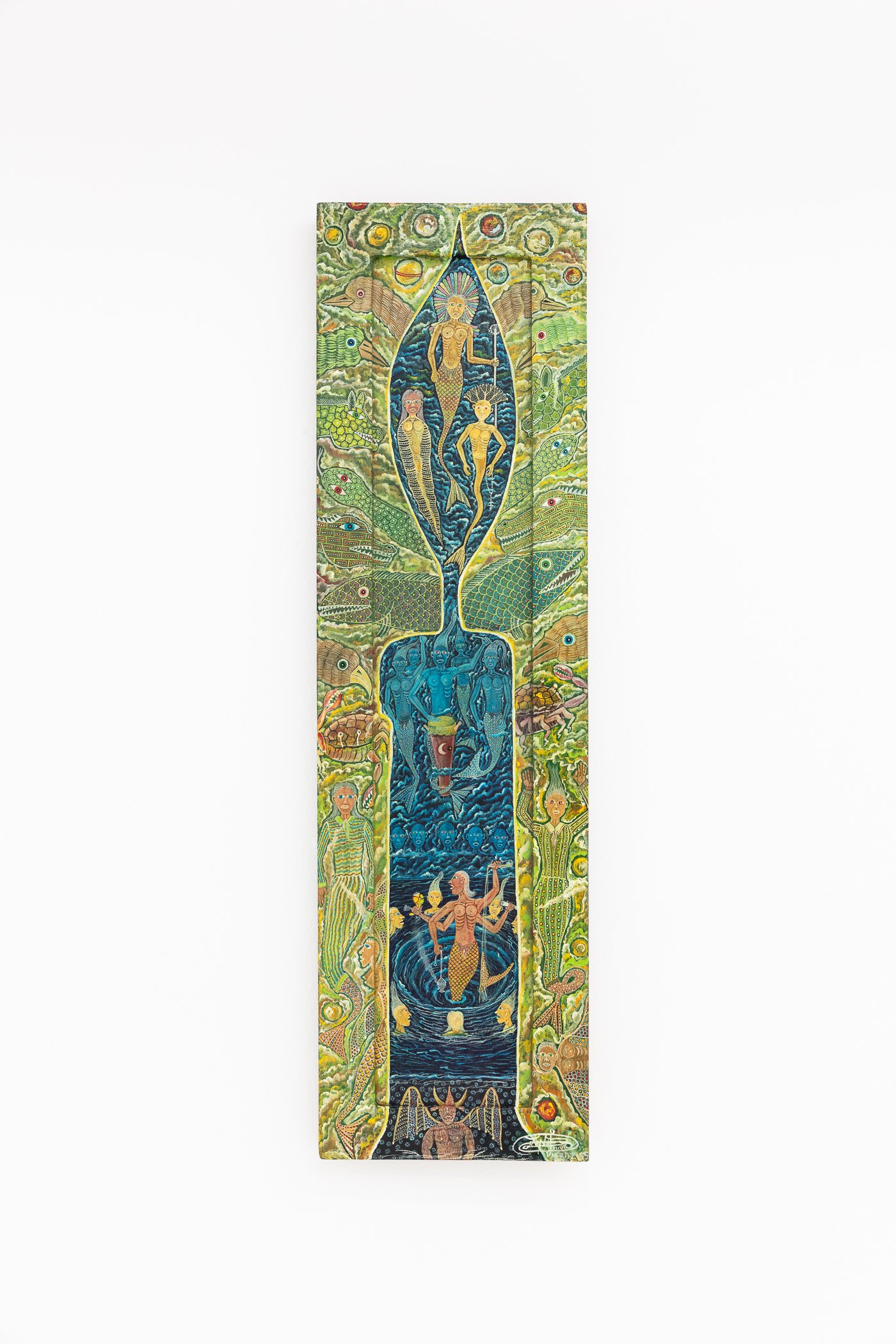
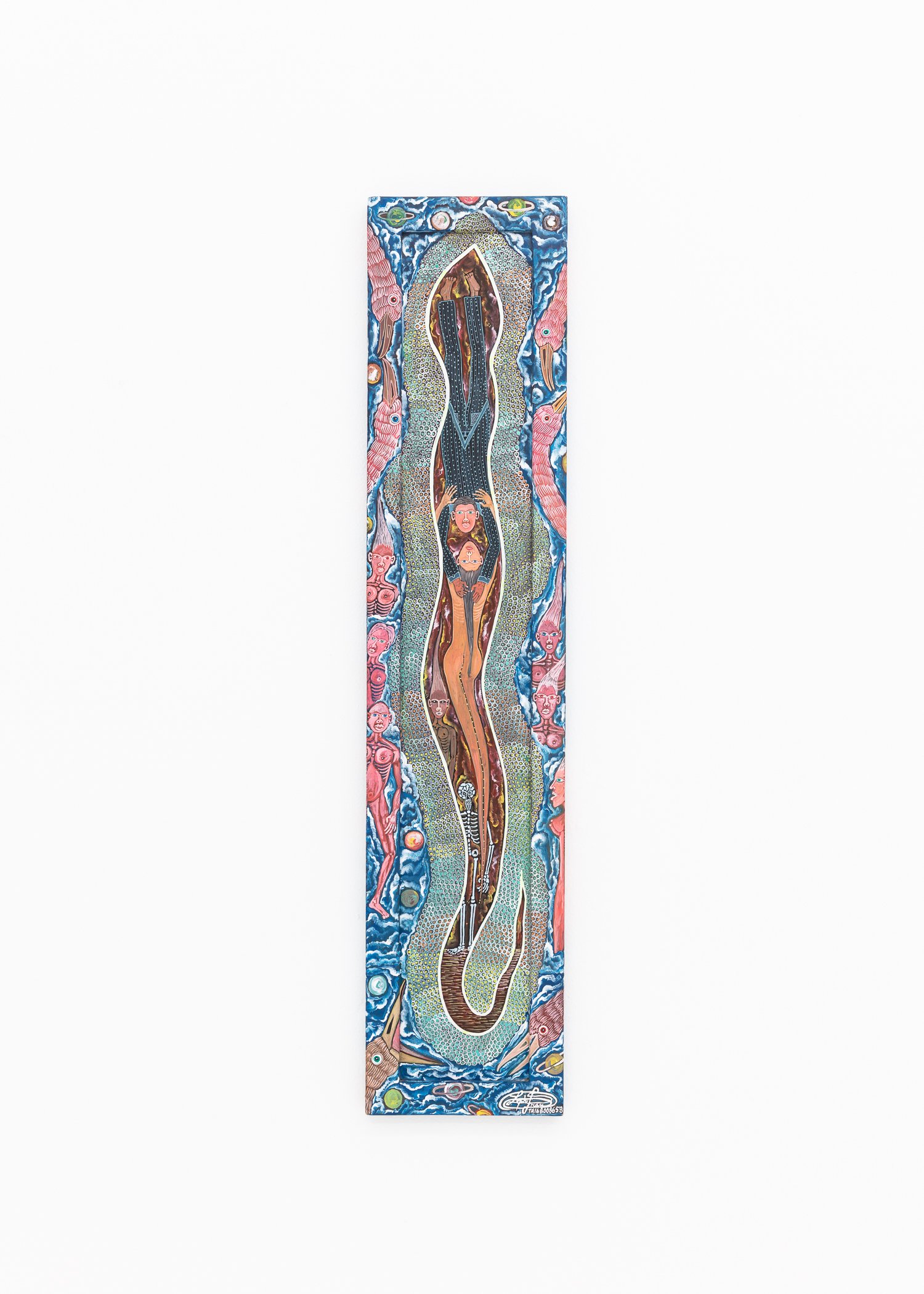
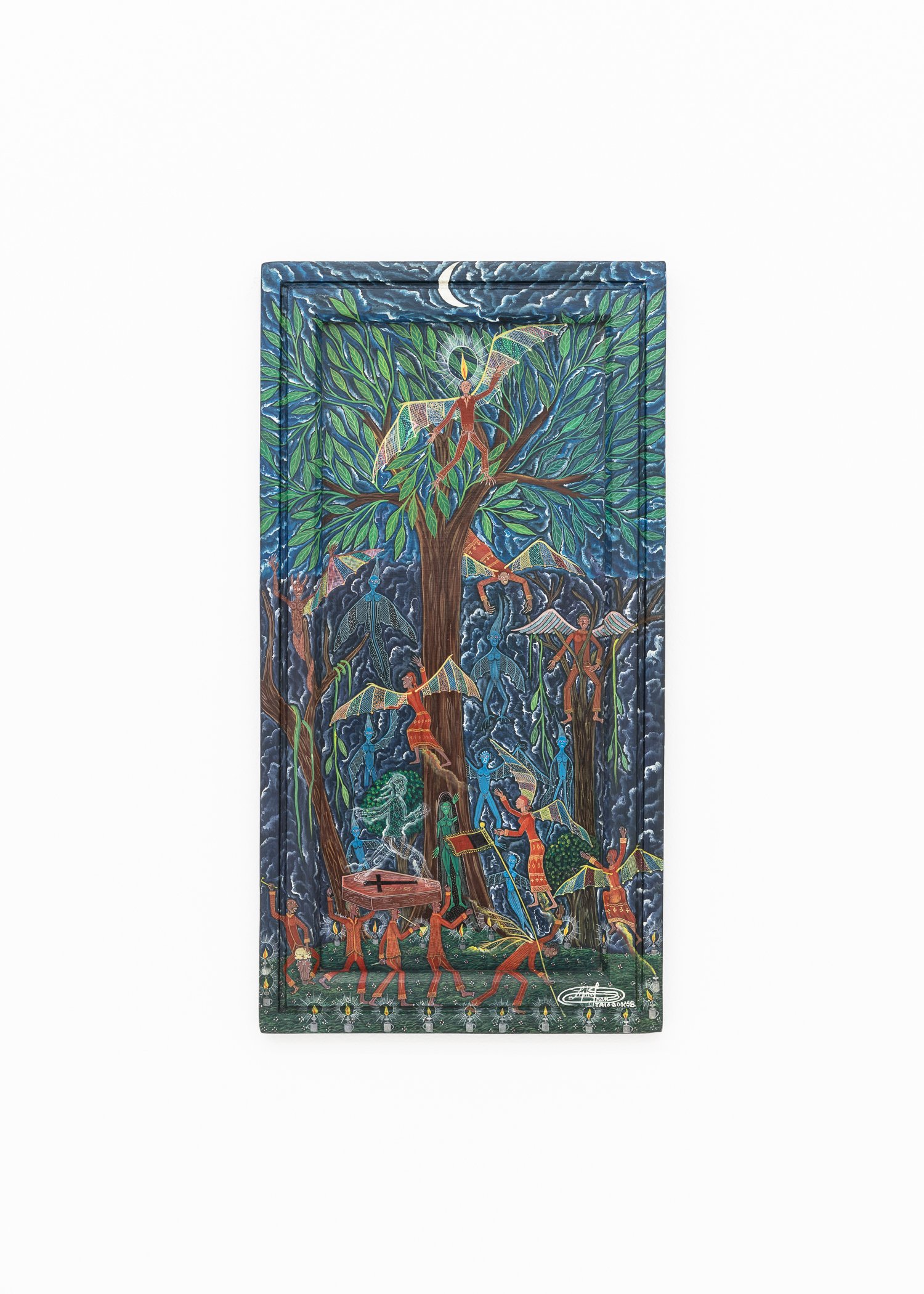
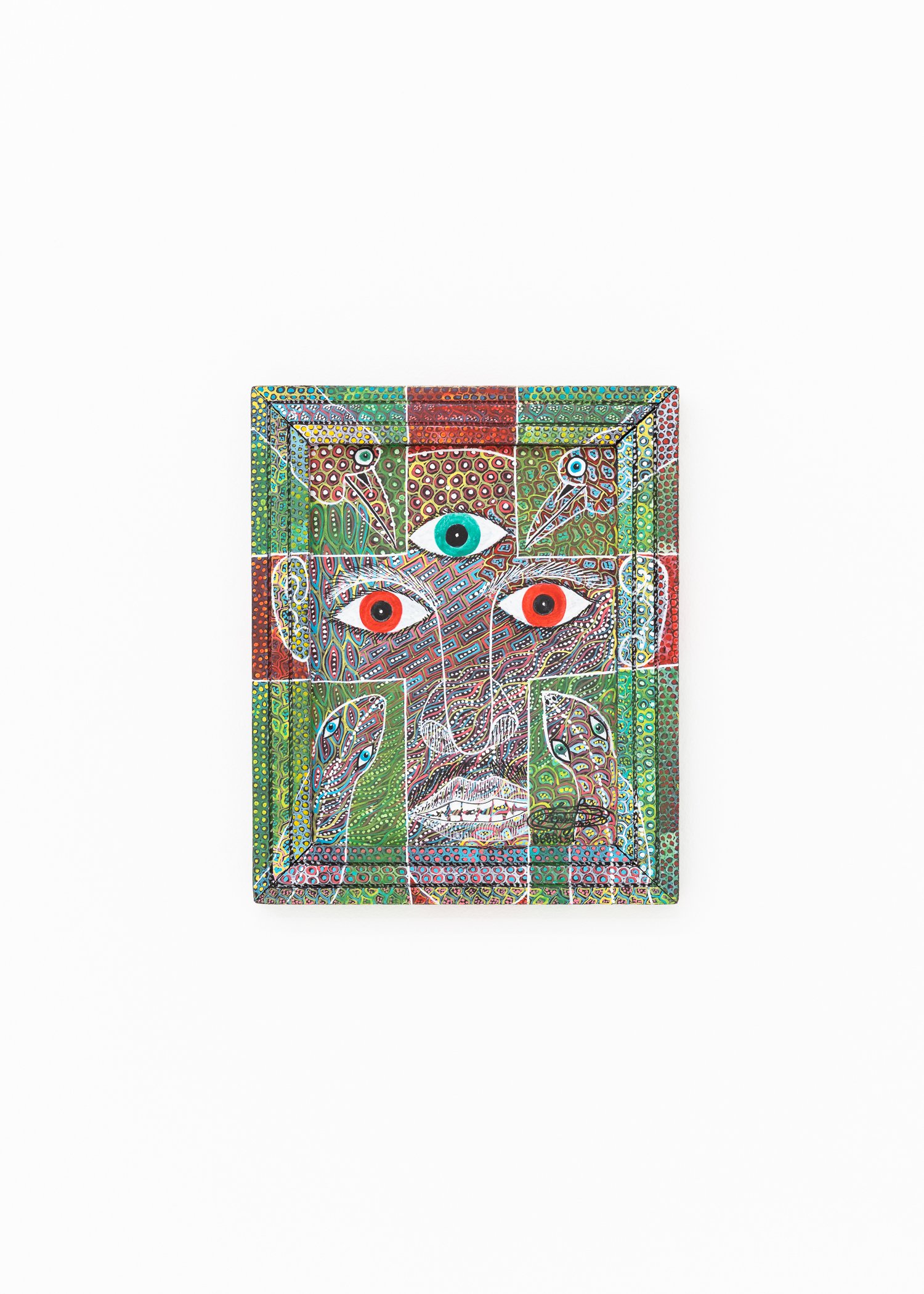
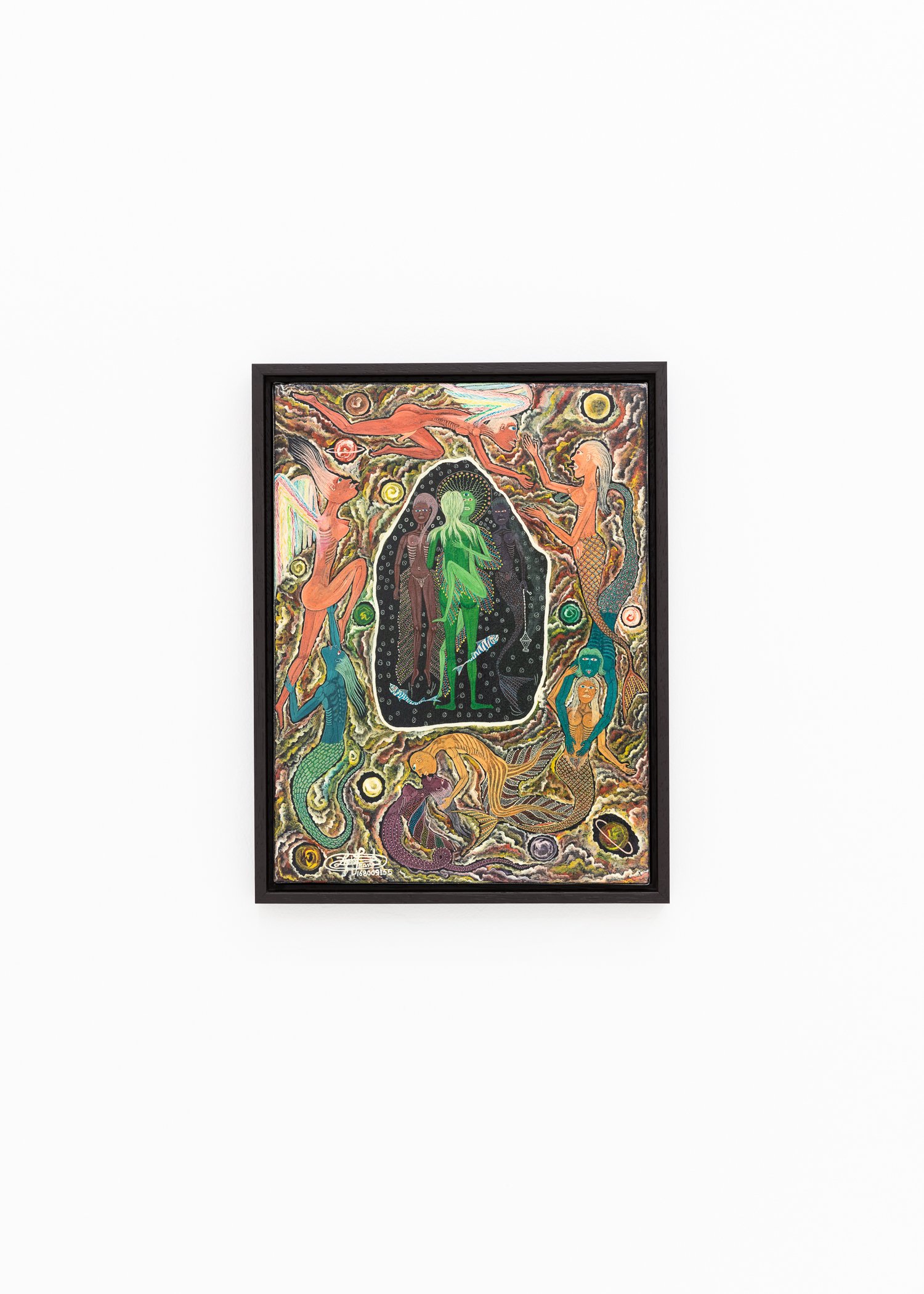
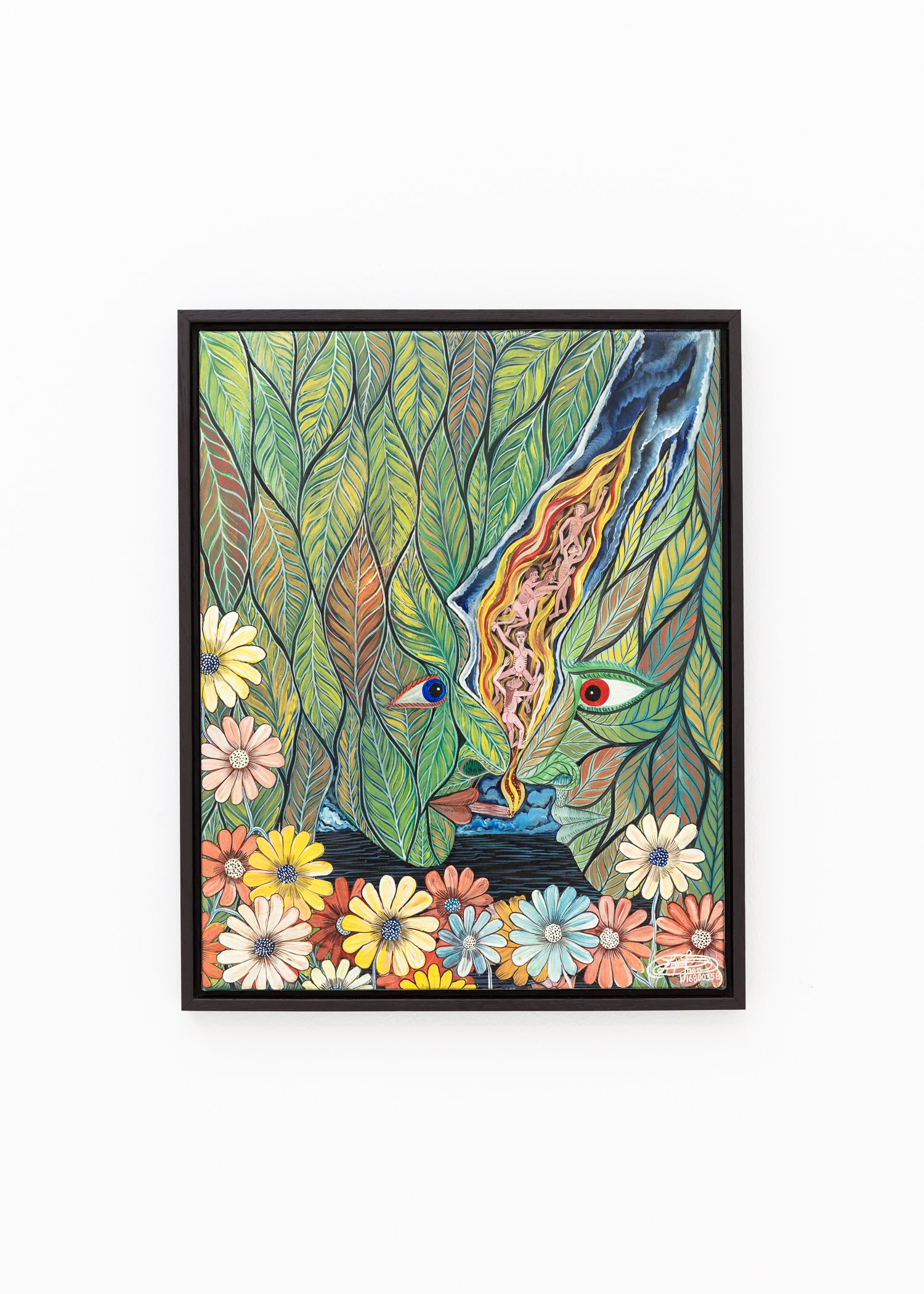
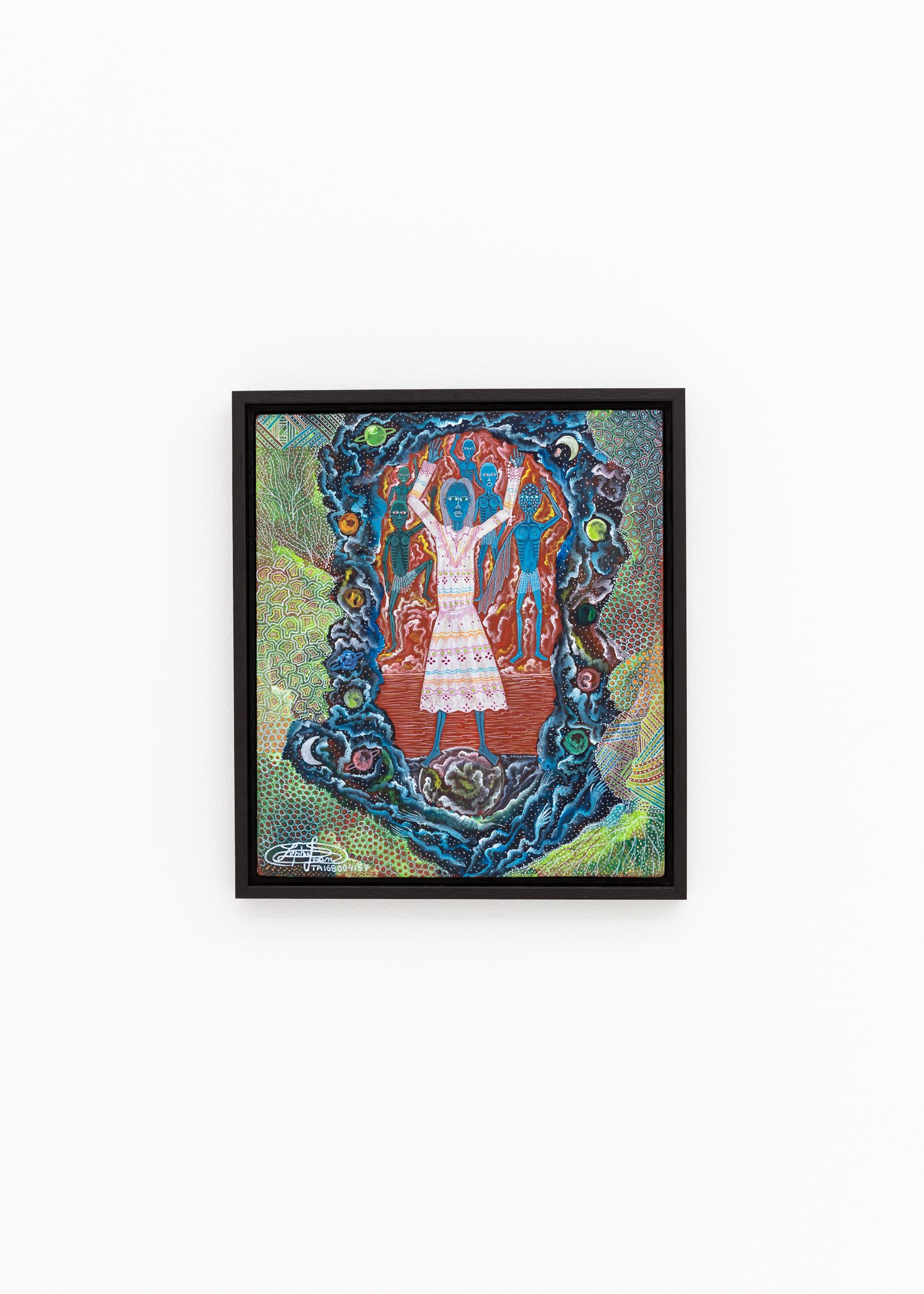
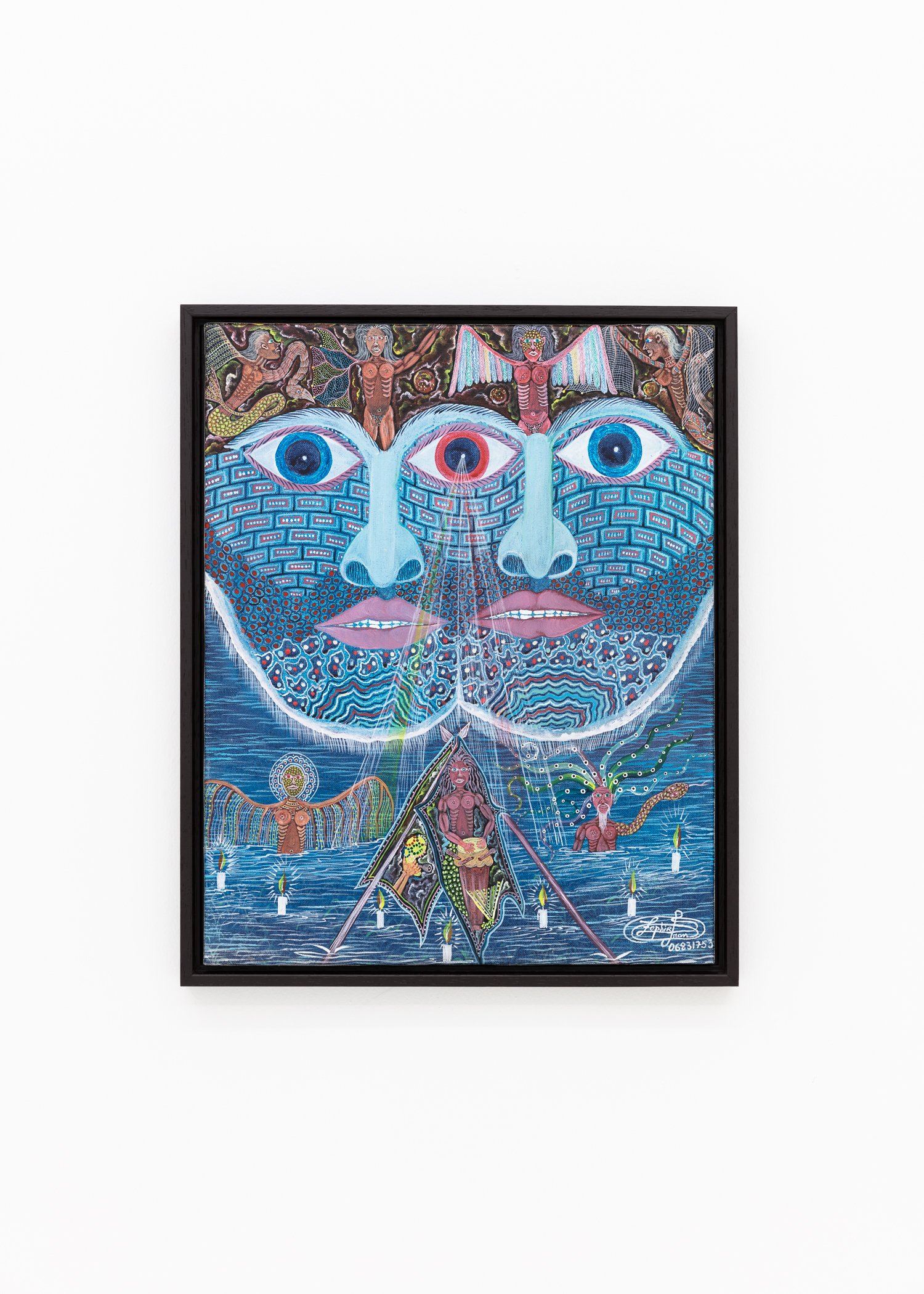
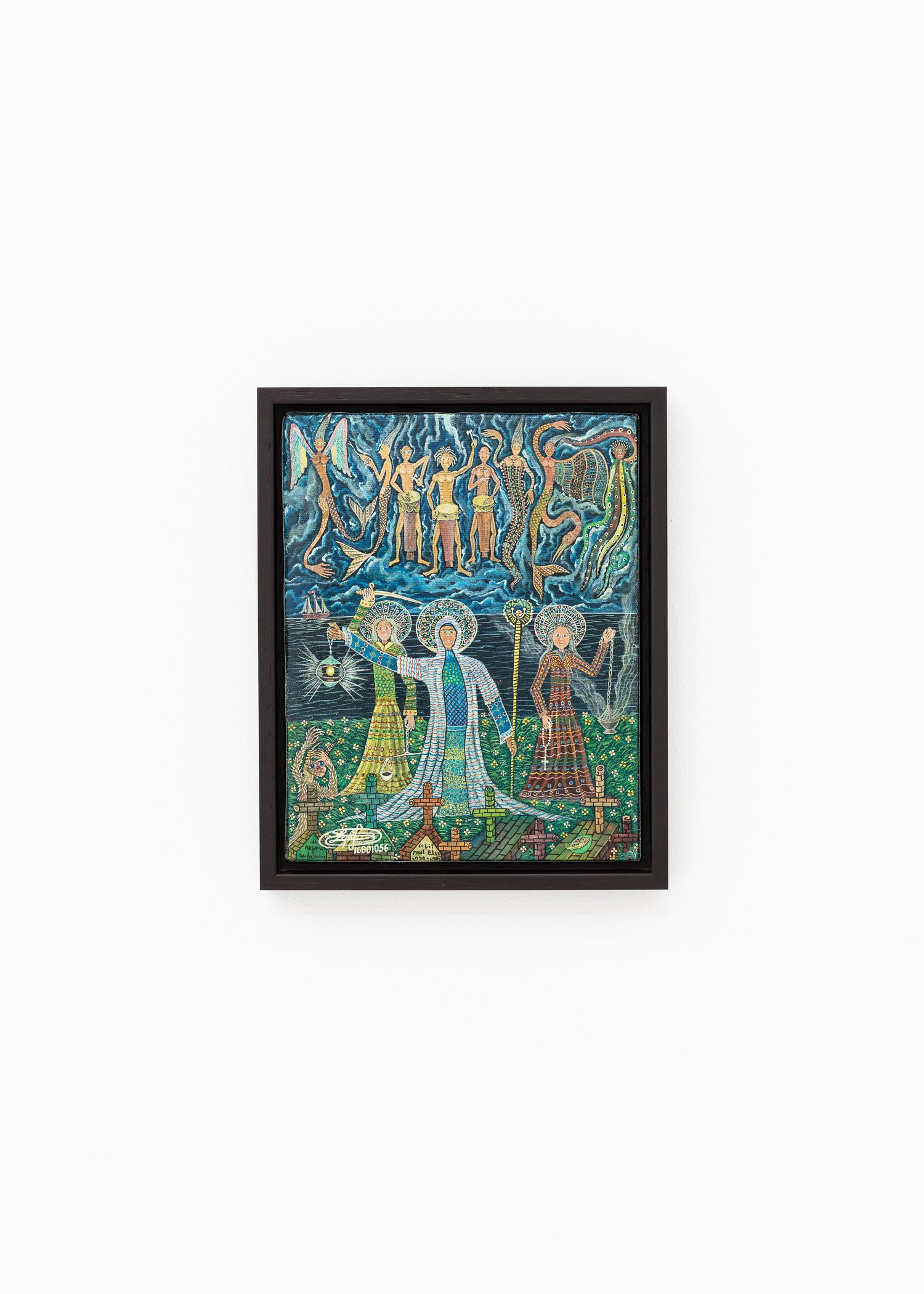
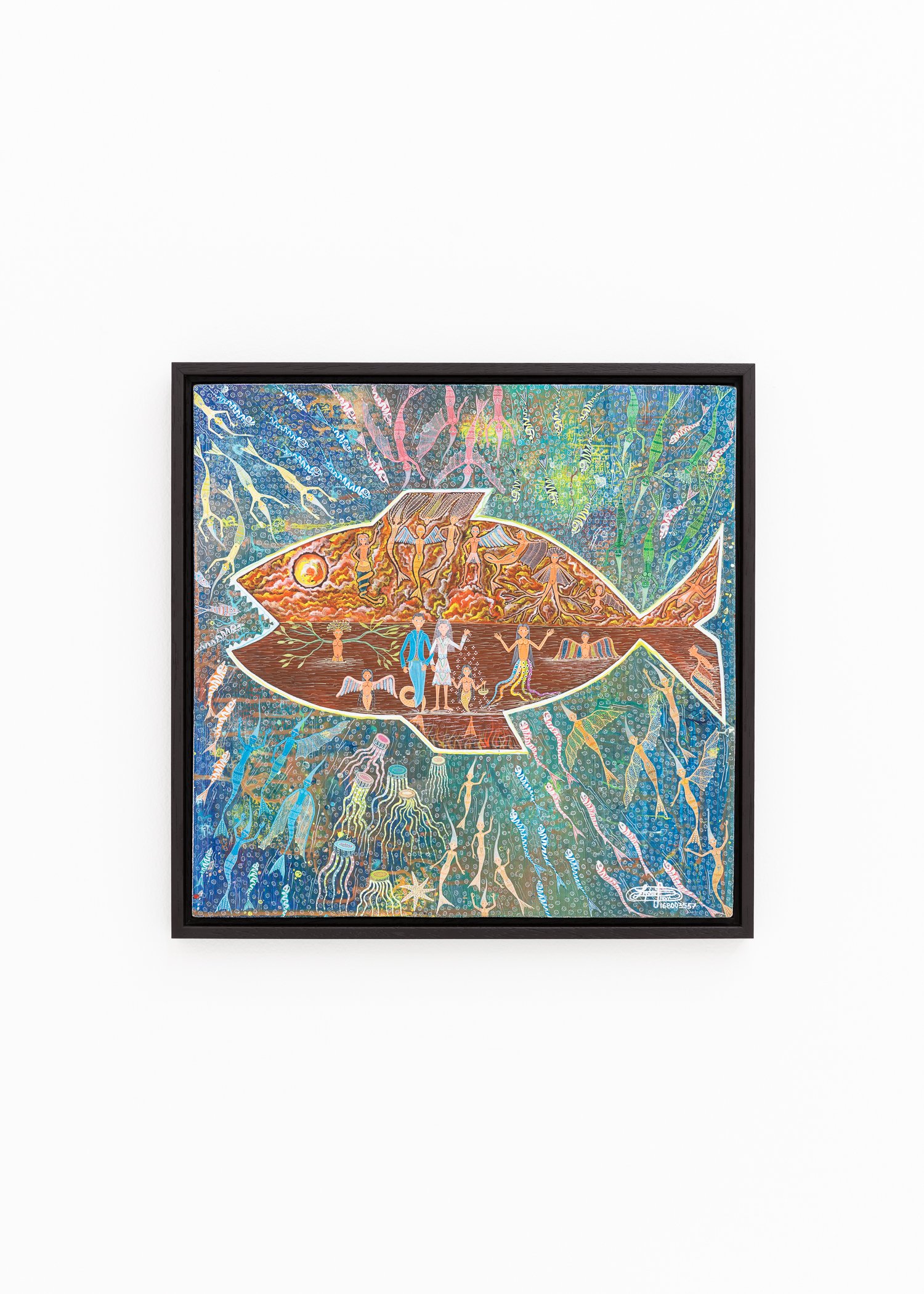
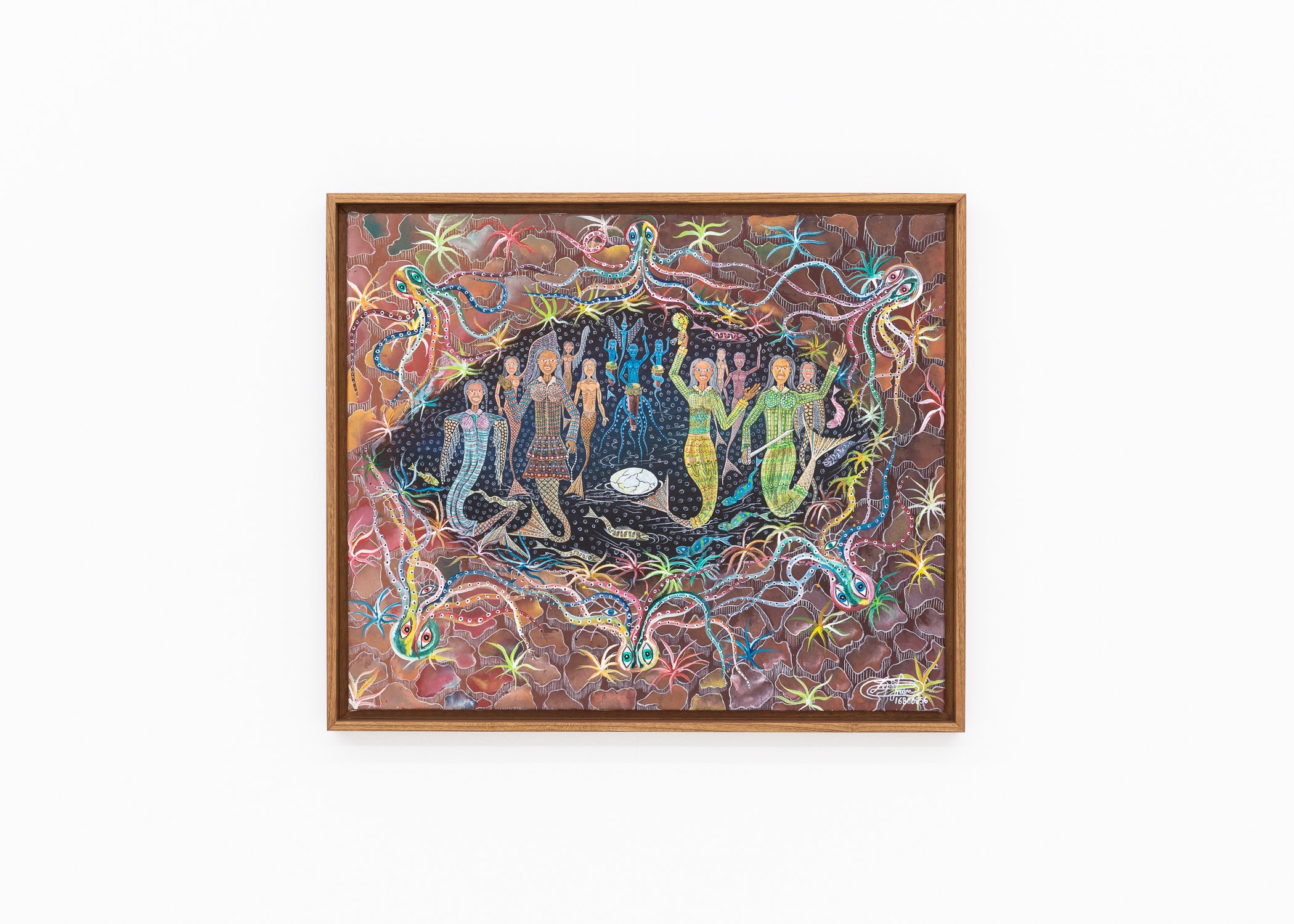
Your Custom Text Here
Curated by Tomm El-Saieh
March 13th-April 11th, 2022.
Opening reception: Sunday March 13th, 5-7 PM.
A frame that dilates and contracts itself, behaves like an eye zooming into the tensions revealed by free association; undressed by the subconscious.
Zephirin’s paintings show a reality that commemorates and remains at odds with itself. A deity becomes a giraffe, a zebra and a fish. A war scene converges with a chorus in ecstasy, and an orgy emerges from two humanoid faces built by leaves. In Frantz Zephirin work’s, rhythm seems to indicate the undulation of meaning beyond the parameters of logic. Dreams and offerings merge, and a retelling of tradition and invention are told by the mind of a painter, that is also, a voodoo priest. His work often depicts The Invisible Ones (The Loas) mutating into animals, plants and humans. This decision signals a profound change in the re-presentation of voodoo deities. Unlike Andre Pierre and many of his followers, (who gave faces to the representation of voodoo deities with their specific syncretic actions and attributes), Zephirin’s figures transcend those attributes, and are seen in a state of becoming. We witness an expansion of the religious into the realm of art, moving beyond the space of illustration, venturing into the tension of the transformative and the reality of initiations.
Borders appear insistently in the work of Frantz Zephirin. At times, they are visible or implied when transformation takes over, and porosity becomes the focus and the context. Zephirin’s work problematizes borders as often as it defines them. This can be seen in his work Ati-Solé Le Dieu Soleil et Des Eclyses. Here we see him painting past his subject, past the canvas, and directly onto the actual wooden frame. The border between the canvas and the wood becomes irrelevant, pushing the works' spiritual content to the forefront. This dissolution of borders allows one to follow the piece as one would follow a path along a Moebius strip—borders become recentered in the work as soon as the content of the piece comes back into focus. In this plane of simultaneity colonizers are met by Voodoo deities in a series of symbolic mergings/confrontations that feed off each other, structuring what seems chaotic into a mise-en-scène defined by the effort to address the complexity of Haiti’s reality, through the creative effort.
In her writing on the Spiralist movement, Kaiama L. Glover writes that, “The Spiralists highlight the possibilities for un-mediated connections between the individual and the universe - connections that in many ways transcend the at-times limiting boundaries of national and, even, regional identity.” Spiralism finds solace in contradictions and connections, in its creation of cycles that feed back and forth into one another: from identity, to spirituality, and back.
It’s clear, then, why Zephirin’s work is often considered part of the Spiralist tradition. Layers of realms stack upon one another: the sky, the ocean, the earth, the living, and the dead. His work’s porosity is focused on dissolution and redefinition. Borders are reconsidered, while an impossibility is revealed: The impossibility that lies beneath any attempt made to flatten complex systems of meaning and cohabitation.
Frantz Zephirin b.1968, Cap-Haitien, Haiti. Zephirin was awarded the Gold Medal in the Third Biennial of Caribbean and Central American Painting sponsored by The Museum of Modern Art of the Dominican Republic. His work was included in the V Biennial in Cuenca, Ecuador; the El-Saieh Gallery in Port-au-Prince, Haiti, among other venues.
His paintings will be included la Biennale di Venezia’s “The Milk of Dreams” curated by Cecilia Alemani; 2022. A solo presentation of his work will open on March 2022, at the Williams College Museum of Art, Massachusetts; curated by Tomm El-Saieh.
Text by Tomm El-Saieh, Viktor El-Saieh, Hunter Osking, and Diego Singh
Spiralism is a Haitain literary movement that emerged in the mid-sixties. Frankétienne described Spiralism as “life at the level of relations (colors, odors, sounds, signs, words) and historical connections (positionings in space and time). Not in a closed circuit, but tracing the path of a spiral.”
Curated by Tomm El-Saieh
March 13th-April 11th, 2022.
Opening reception: Sunday March 13th, 5-7 PM.
A frame that dilates and contracts itself, behaves like an eye zooming into the tensions revealed by free association; undressed by the subconscious.
Zephirin’s paintings show a reality that commemorates and remains at odds with itself. A deity becomes a giraffe, a zebra and a fish. A war scene converges with a chorus in ecstasy, and an orgy emerges from two humanoid faces built by leaves. In Frantz Zephirin work’s, rhythm seems to indicate the undulation of meaning beyond the parameters of logic. Dreams and offerings merge, and a retelling of tradition and invention are told by the mind of a painter, that is also, a voodoo priest. His work often depicts The Invisible Ones (The Loas) mutating into animals, plants and humans. This decision signals a profound change in the re-presentation of voodoo deities. Unlike Andre Pierre and many of his followers, (who gave faces to the representation of voodoo deities with their specific syncretic actions and attributes), Zephirin’s figures transcend those attributes, and are seen in a state of becoming. We witness an expansion of the religious into the realm of art, moving beyond the space of illustration, venturing into the tension of the transformative and the reality of initiations.
Borders appear insistently in the work of Frantz Zephirin. At times, they are visible or implied when transformation takes over, and porosity becomes the focus and the context. Zephirin’s work problematizes borders as often as it defines them. This can be seen in his work Ati-Solé Le Dieu Soleil et Des Eclyses. Here we see him painting past his subject, past the canvas, and directly onto the actual wooden frame. The border between the canvas and the wood becomes irrelevant, pushing the works' spiritual content to the forefront. This dissolution of borders allows one to follow the piece as one would follow a path along a Moebius strip—borders become recentered in the work as soon as the content of the piece comes back into focus. In this plane of simultaneity colonizers are met by Voodoo deities in a series of symbolic mergings/confrontations that feed off each other, structuring what seems chaotic into a mise-en-scène defined by the effort to address the complexity of Haiti’s reality, through the creative effort.
In her writing on the Spiralist movement, Kaiama L. Glover writes that, “The Spiralists highlight the possibilities for un-mediated connections between the individual and the universe - connections that in many ways transcend the at-times limiting boundaries of national and, even, regional identity.” Spiralism finds solace in contradictions and connections, in its creation of cycles that feed back and forth into one another: from identity, to spirituality, and back.
It’s clear, then, why Zephirin’s work is often considered part of the Spiralist tradition. Layers of realms stack upon one another: the sky, the ocean, the earth, the living, and the dead. His work’s porosity is focused on dissolution and redefinition. Borders are reconsidered, while an impossibility is revealed: The impossibility that lies beneath any attempt made to flatten complex systems of meaning and cohabitation.
Frantz Zephirin b.1968, Cap-Haitien, Haiti. Zephirin was awarded the Gold Medal in the Third Biennial of Caribbean and Central American Painting sponsored by The Museum of Modern Art of the Dominican Republic. His work was included in the V Biennial in Cuenca, Ecuador; the El-Saieh Gallery in Port-au-Prince, Haiti, among other venues.
His paintings will be included la Biennale di Venezia’s “The Milk of Dreams” curated by Cecilia Alemani; 2022. A solo presentation of his work will open on March 2022, at the Williams College Museum of Art, Massachusetts; curated by Tomm El-Saieh.
Text by Tomm El-Saieh, Viktor El-Saieh, Hunter Osking, and Diego Singh
Spiralism is a Haitain literary movement that emerged in the mid-sixties. Frankétienne described Spiralism as “life at the level of relations (colors, odors, sounds, signs, words) and historical connections (positionings in space and time). Not in a closed circuit, but tracing the path of a spiral.”